Philips OLED910 is one of the candidates for the title of TV of the Year 2025 – and we say this with full conviction. Thanks to the META panel used, specifically the Tandem OLED produced by LG Display, we get top-notch brightness that has not been seen in WOLED televisions before. Combined with perfect contrast, this provides unmatched experiences for evening viewing, which are difficult to find elsewhere. And if we add the four-sided Ambilight system to this, evening screenings can look better than on any other television. The OLED910 is not just a screen for films but also an excellent choice for gamers. The fast 144 Hz panel, along with the suite of features for gamers, does the job and gives the impression that this is equipment designed with modern gaming in mind. The sound is also worthy of special mention – in our opinion, it's the best built-in speaker system we've encountered in a television so far. The soundbar, created in collaboration with Bowers & Wilkins, demonstrates that one can do without an external setup, and if someone wishes, they can always add a subwoofer and step up to a full-fledged home cinema level. Of course, it is not the cheapest model, and compared to competitors, it requires digging deeper into your pockets. But it also has a few aces up its sleeve that make the extra cost seem justified. The question is: are you ready to spend more to have Ambilight, Bowers & Wilkins soundbar, and Tandem OLED panel? This is something everyone must evaluate for themselves. We can say one thing – by choosing the OLED910, you are purchasing one of the most interesting televisions of 2025.
- Matching (Score)
- Our verdict
- TV appearance
- Where to buy
- Contrast and black detail
- HDR effect quality
- Factory color reproduction
- Color reproduction after calibration
- Smoothness of tonal transitions
- Image scaling and smoothness of tonal transitions
- Blur and motion smoothness
- Console compatibility and gaming features
- Input lag
- Compatibility with PC
- Viewing angles
- TV efficiency during daytime
- Details about the matrix
- TV features
- Apps
- Playing files from USB
- Sound
Philips OLED910 vs TCL C7K / QM7K 55"-85"
Direct compare
OLED910
C7K / Q7C / MQLED85K / C79K / C71K / QM7K

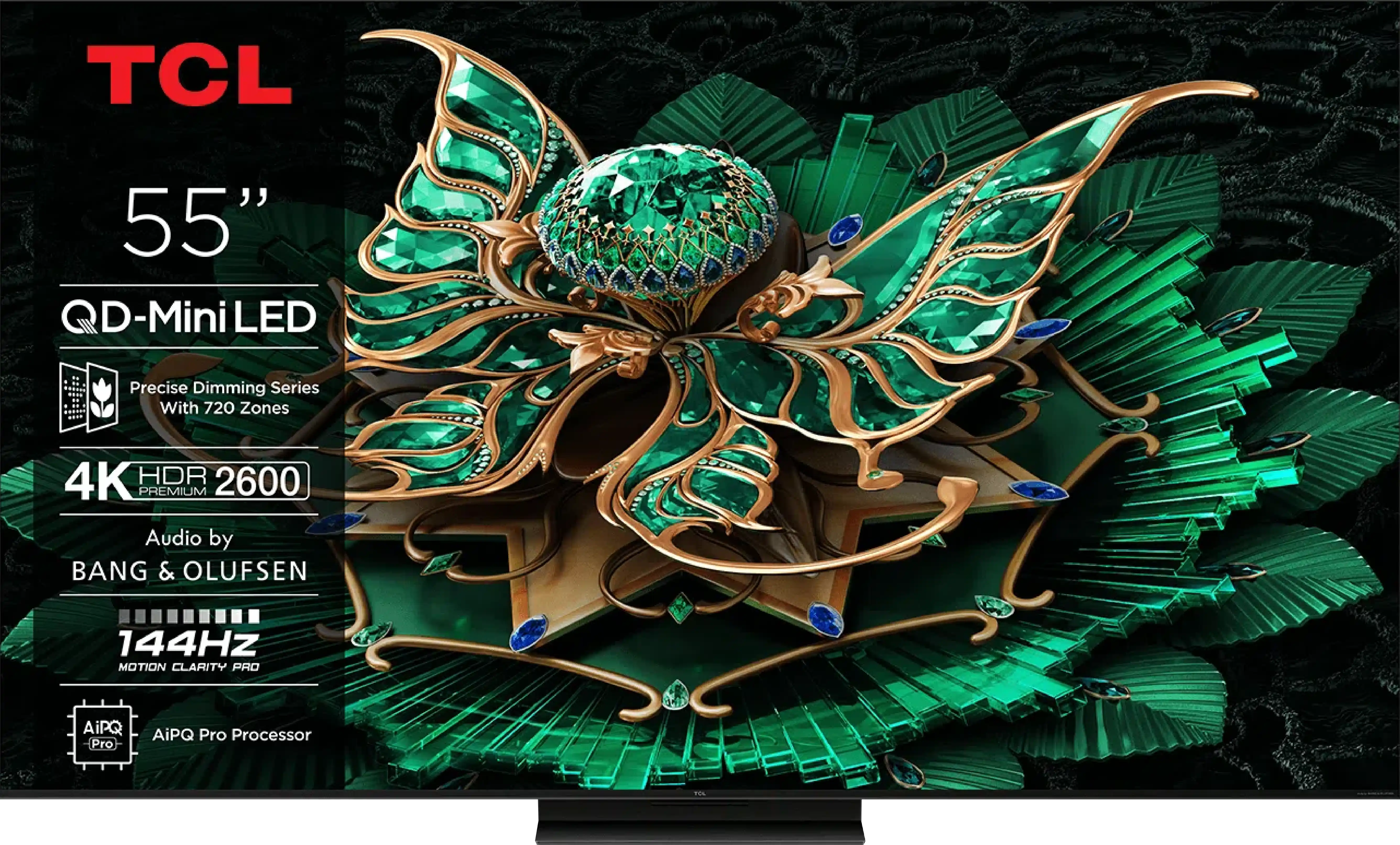
Panel type: WRGB OLED
Resolution: 3840x2160
System: Google TV
Model year: 2025
Complete the survey to find out the result

Panel type: LCD VA
Resolution: 3840x2160
System: Google TV
Model year: 2025
Complete the survey to find out the result

Overall rating
8.5
7.4
Movies and series in UHD quality
8.9
7.2
Classic TV, YouTube
8.8
6.9
Sports broadcasts (TV and apps)
8.5
6.8
Gaming on console
9.5
8.7
TV as a computer monitor
6.5
8.4
Watching in bright light
7.3
6.4
Utility functions
6.4
7.3
Apps
9.6
9.6
Sound quality
9.5
7.7
Complete the survey to find out what fits your preferences
Advantages
Remarkable brightness, over 2000 nits in HDR!
Perfect black levels and very high contrast
Support for all major HDR formats: Dolby Vision and HDR10+
Very low input lag, amazing for gaming
Excellent motion smoothness, 144 Hz refresh rate and support for VRR and ALLM.
Four-sided Ambilight system making a huge impression
Google TV with a massive library of apps and efficient Google Assistant.
One of the best sounding televisions thanks to the Bowers & Wilkins soundbar
Support for audio formats Dolby Atmos and DTS:X
Very good black - VA panel with a large number of Mini-LED zones
High brightness in HDR - over 1000 nits
Great for gamers - HDMI 2.1, low input lag, VRR, ALLM, etc.
Good motion smoothness - 144Hz panel
Supports multiple HDR formats: HDR10, HDR10+, Dolby Vision
Google TV operating system with access to a vast application base
Pleasant sound from built-in speakers (6.2.2) Bang & Olufsen
Disadvantages
Only two HDMI 2.1 ports instead of four (this may be a limitation with more than one console)
Average font readability when working with a PC due to the lack of full chroma 4:4:4
Lack of several classic features – PiP, USB recording, infrared remote control
Price compared to the competition
Google TV can work with minor stutters
No USB recording and PiP function
Our verdict
There are televisions that come in for testing and at first glance seem like just another "average" model. The TCL C7K looks just that way – without grand claims of revolution, without ambitions to dethrone OLEDs. Yet after spending a few days with this model, it's hard not to conclude that it's actually a well-made product. Its greatest strengths? Very good picture quality at a reasonable price. MiniLED combined with QLED filtering provides vibrant colours, high brightness, and contrast that really impresses in this class. Motion in sports or gaming looks smooth, and the presence of HDMI 2.1 and 144 Hz refresh rate makes gaming on this model a pure delight. Additionally, there's the Google TV system – it offers a vast range of possibilities: from voice control to AirPlay support, and access to all the most important applications.
Are there any drawbacks? Certainly. MiniLED still has its limitations, and in the most challenging cinematic scenes, compromises in dimming can be noticed. Google TV also doesn't always run perfectly smoothly. However, these are rather minor issues that don't overshadow the overall picture – which is indeed very positive. It's also worth highlighting the difference between versions. The 50-inch version we tested can surprise, but the 55–85 inch models perform significantly better – they have more lighting zones, even higher contrast quality, and better sound. So if you're considering purchasing the C7K, it's definitely worth opting for a larger size.
TV appearance




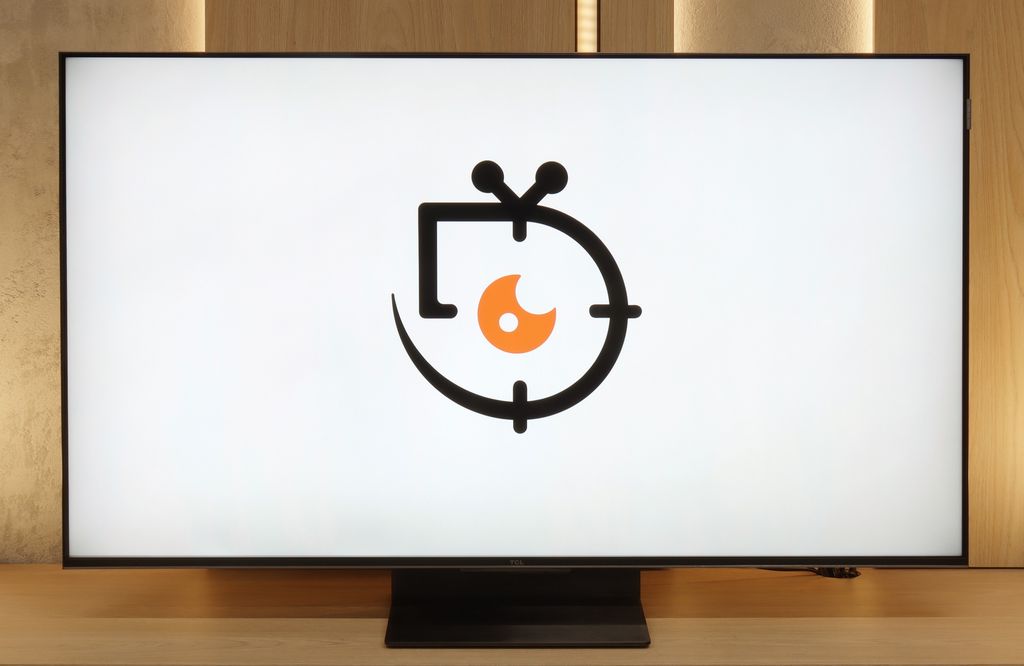
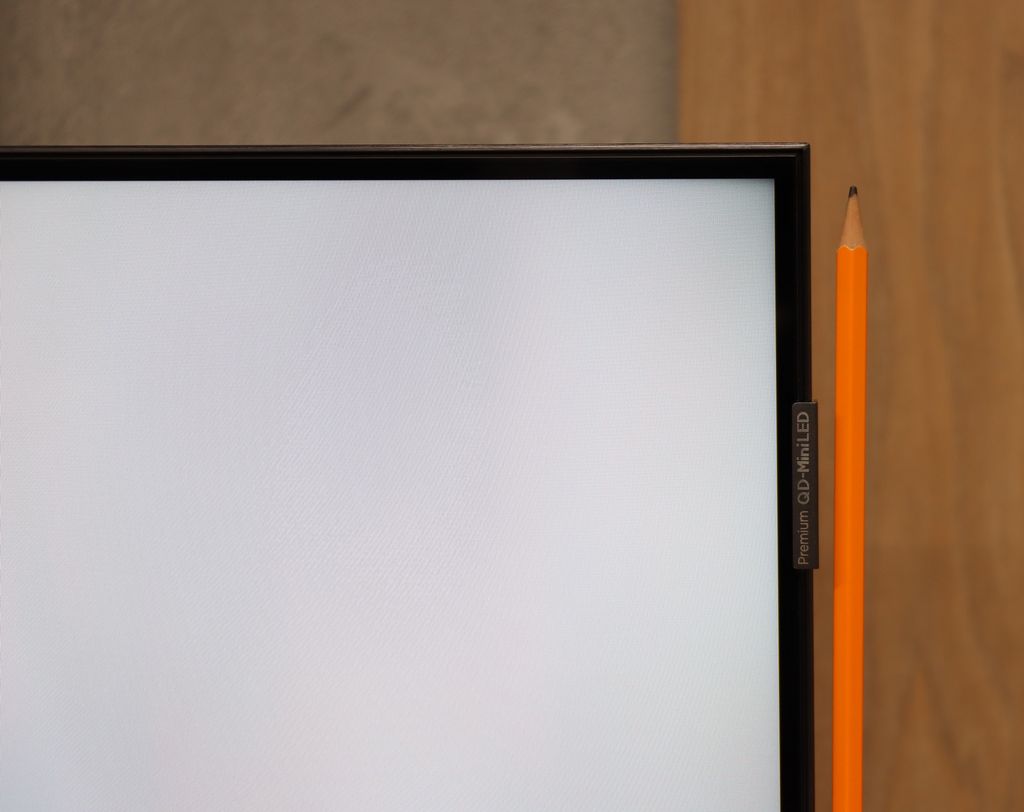
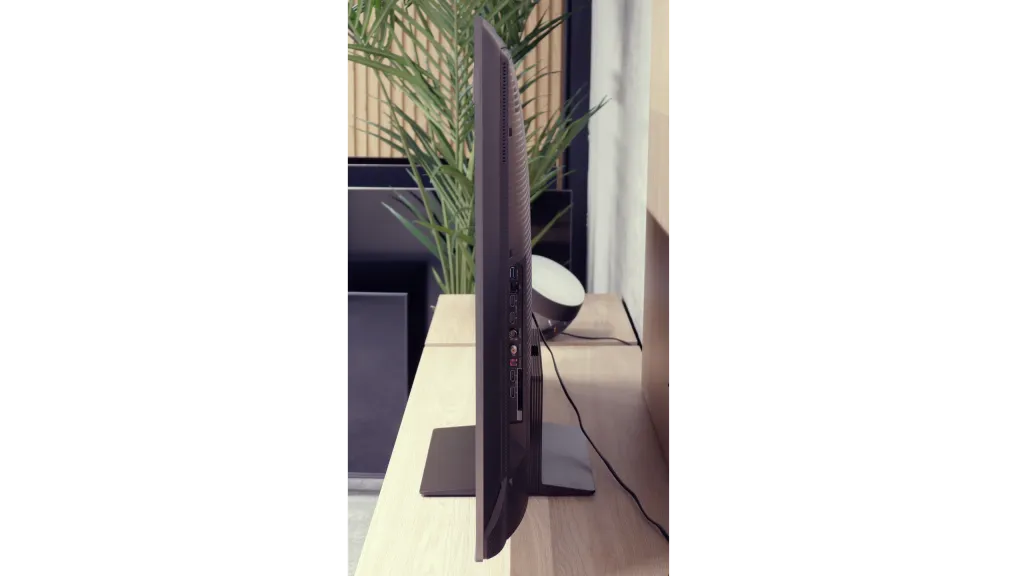
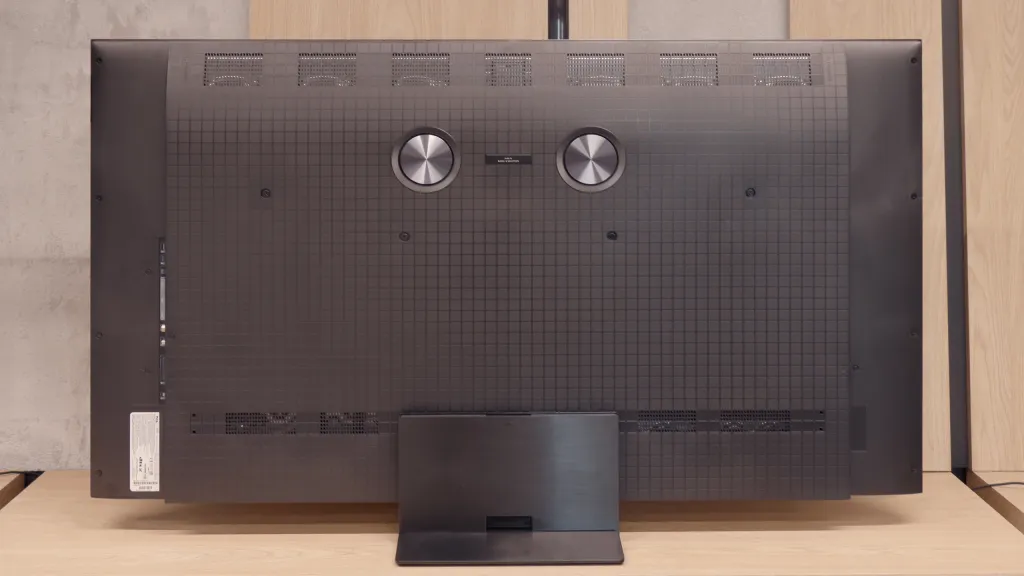
Contrast and black detail
10/10
8.1/10
Local dimming function: Yes, number of zones: 1008 (42 x 24)
Contrast:

Result
∞:1

Result
∞:1

Result
∞:1

Result
∞:1

Result
∞:1

Result
256,000:1

Result
59,850:1

Result
22,200:1

Result
16,850:1

Result
11,400:1
Halo effect and black detail visibility:

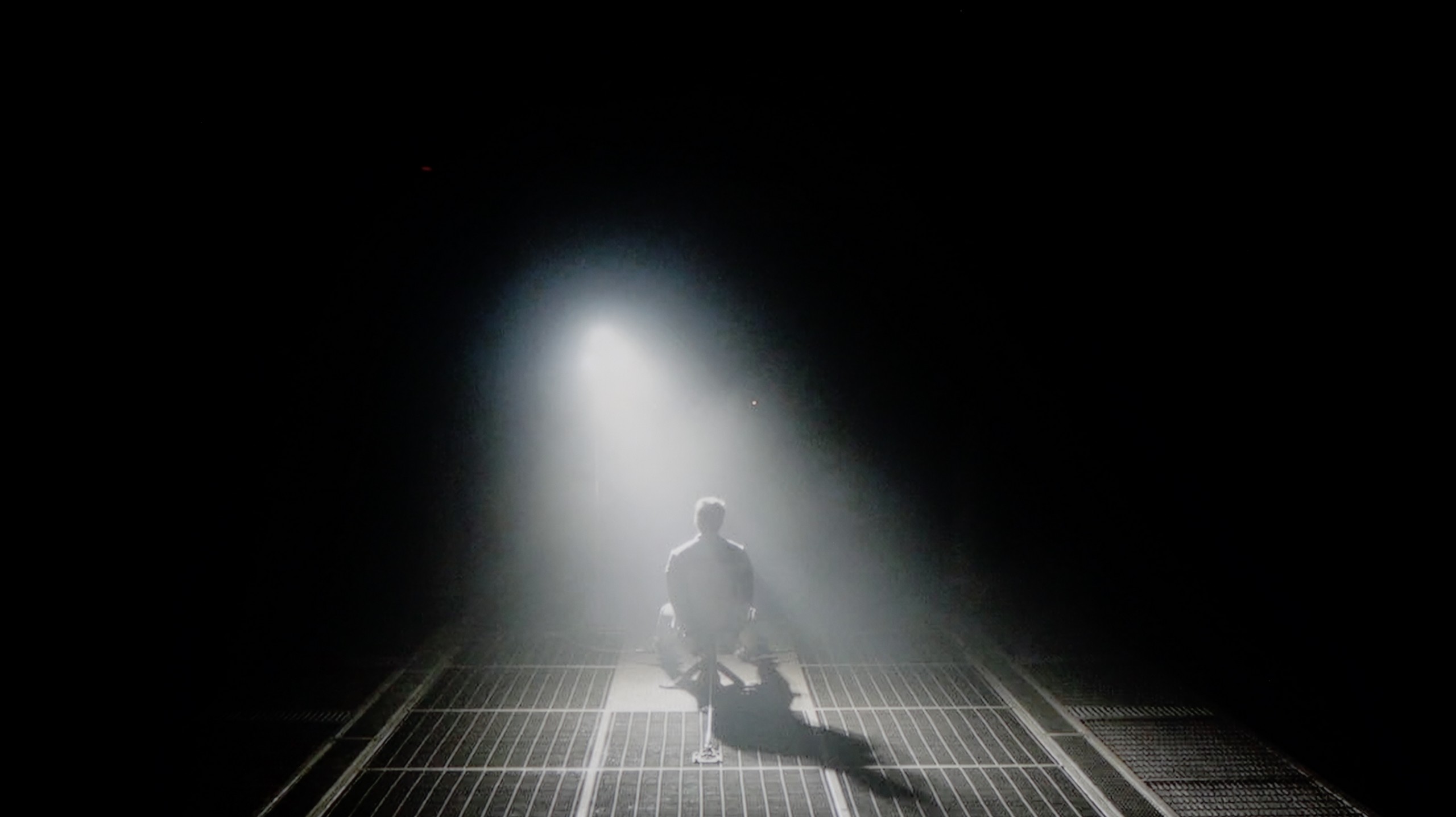
As expected of an OLED television, the Philips OLED910 also offers an absolute level of black and remarkable contrast. This is a natural advantage of organic technology – each pixel is controlled independently, so when it needs to be black, it simply turns off. The image gains a depth that even the best Mini-LED televisions cannot reproduce, where there is always a risk of slight "blooming" or halo effect around bright elements. With the OLED910, this is not an issue – dark scenes are entirely credible, and at the same time, the television can replicate details in highlights with great precision, preserving their natural structure. In everyday viewing, this translates to an exceptional sense of realism and a cinematic quality. In this category, the OLED910 undoubtedly deserves the highest marks.
The results of black and contrast tests in models ranging from 55 to 85 inches are very similar, which is why in the main part of the evaluation we refer to the 65-inch version. It is a natural phenomenon that larger sizes mean a greater number of local dimming zones, and in the case of 65 inches, we counted over 1000. The effect is very good – the contrast is at a high level and performs definitely better than in the smallest, 50-inch variant. Typical MiniLED limitations are still visible, such as the halo effect or slightly too aggressive dimming of the image, however, here they are less noticeable than in the smaller model.
For comparison, it is worth recalling that the 50-inch TCL C7K, despite surprising with the use of as many as 336 dimming zones, had difficulties managing the backlight in more complex scenes – overexposures or loss of detail occurred. In larger sizes, this problem does not completely disappear, but thanks to the greater number of zones, its impact on the perception of the image is less bothersome.
HDR effect quality
8.8/10
6.2/10
Luminance measurements in HDR:

Result
2008 nit

Result
2109 nit

Result
2214 nit

Result
2152 nit

Result
1382 nit

Result
1108 nit

Result
405 nit

Result
865 nit

Result
290 nit

Result
848 nit
Scene from the movie “Pan” (about 2800 nits)


Scene from the movie “Billy Lynn” (about 1100 nits)


Static HDR10


Dynamic: Dolby Vision
Dynamic: Dolby Vision


HDR luminance chart:
TCL C7K / QM7K 55"-85"
HDR luminance
Philips OLED910
HDR luminance
Luminance of RGB colors
The OLED910 is simply an absurdly bright television for an OLED. All thanks to the new panel from LG Display, the Tandem RGB OLED, which Philips has dubbed its "META OLED." It is this panel that allows for over 2000 nits of brightness in films, which not long ago was completely unattainable in OLEDs. The television also deserves high praise for how it handles full-screen scenes drenched in bright light. Generally, in OLEDs, brightness drops significantly during such scenes, but here it remains at an excellent level – around 1400 nits. These are almost reference values, and combined with the excellent colour reproduction at 99% DCI P3 and 82% BT.2020, it gives us an HDR effect that can confidently be called one of the best in the world.
In terms of brightness, the models ranging from 55 to 85 inches in the C7K series are truly impressive. Under the best testing conditions, the 65-inch screen reached over 1200 nits, which in practice means that the brightest scenes can shine with almost cinematic brilliance. These are not just dry numbers from measurements – during viewings, the white skies, explosions or reflections of light on water looked extraordinarily striking, often giving the impression that the television exceeded its price class. This is particularly effective in scenes with large areas of brightness, where the screen is filled with intense light – such as in sunlit shots or during dynamic action sequences. Viewers seeking strong HDR will definitely be satisfied.
However, scenes that require precise control of the backlighting – with small points of light on a dark background – prove to be more challenging. Here, the C7K, despite having over a thousand zones, still dims the brightness to maintain deep blacks. The effect is that in films like Sicario 2 or Life of Pi, some details, like a distant lantern or single reflections, can be less distinct or blend into the surroundings. This is a compromise inherent in MiniLED technology – it provides excellent image depth and blacks at a level that ordinary LCDs do not offer, but this comes at the cost of limited visibility of the finest lights.
Factory color reproduction
5.5/10
6/10


Factory Mode
After calibration
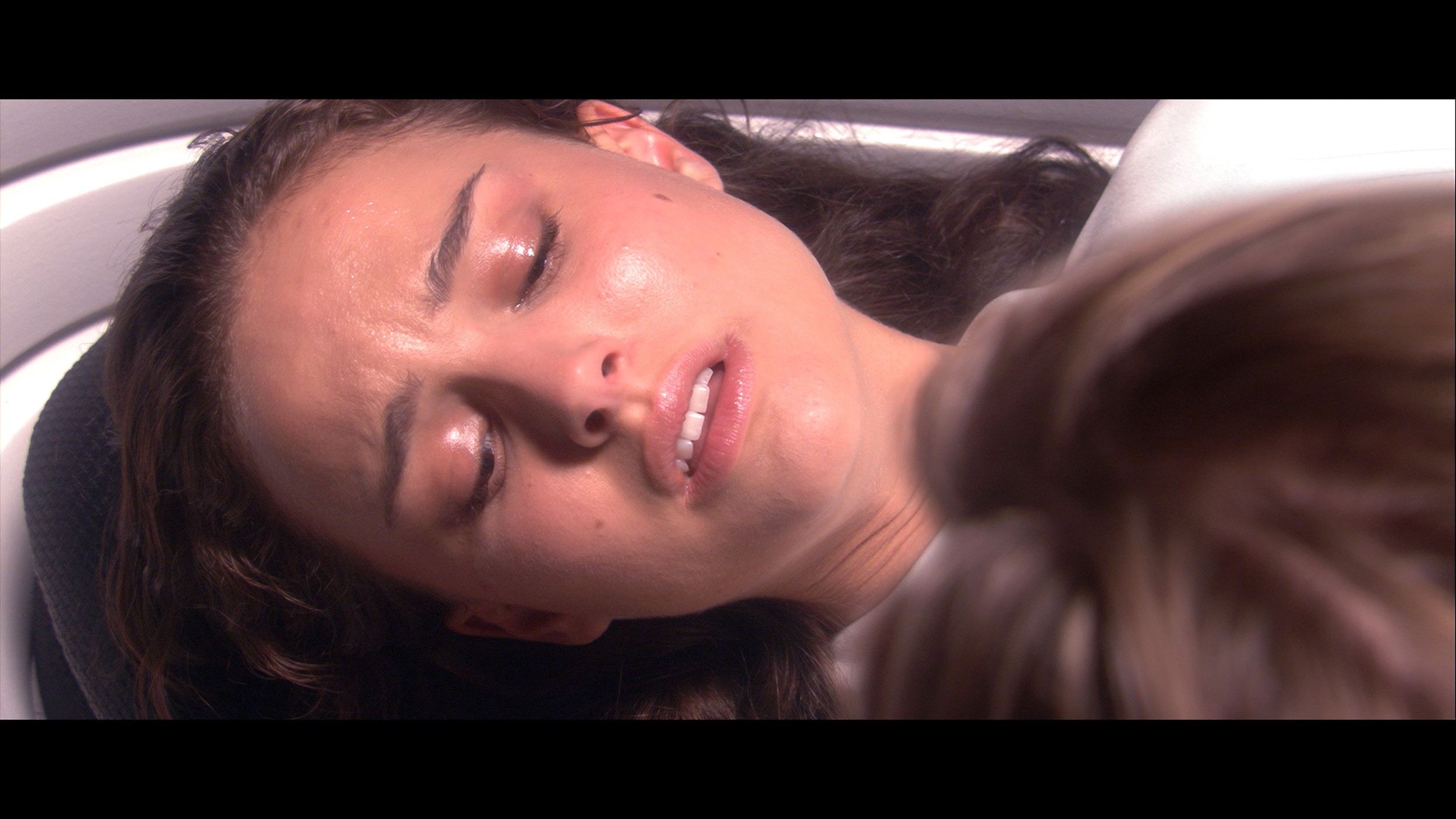
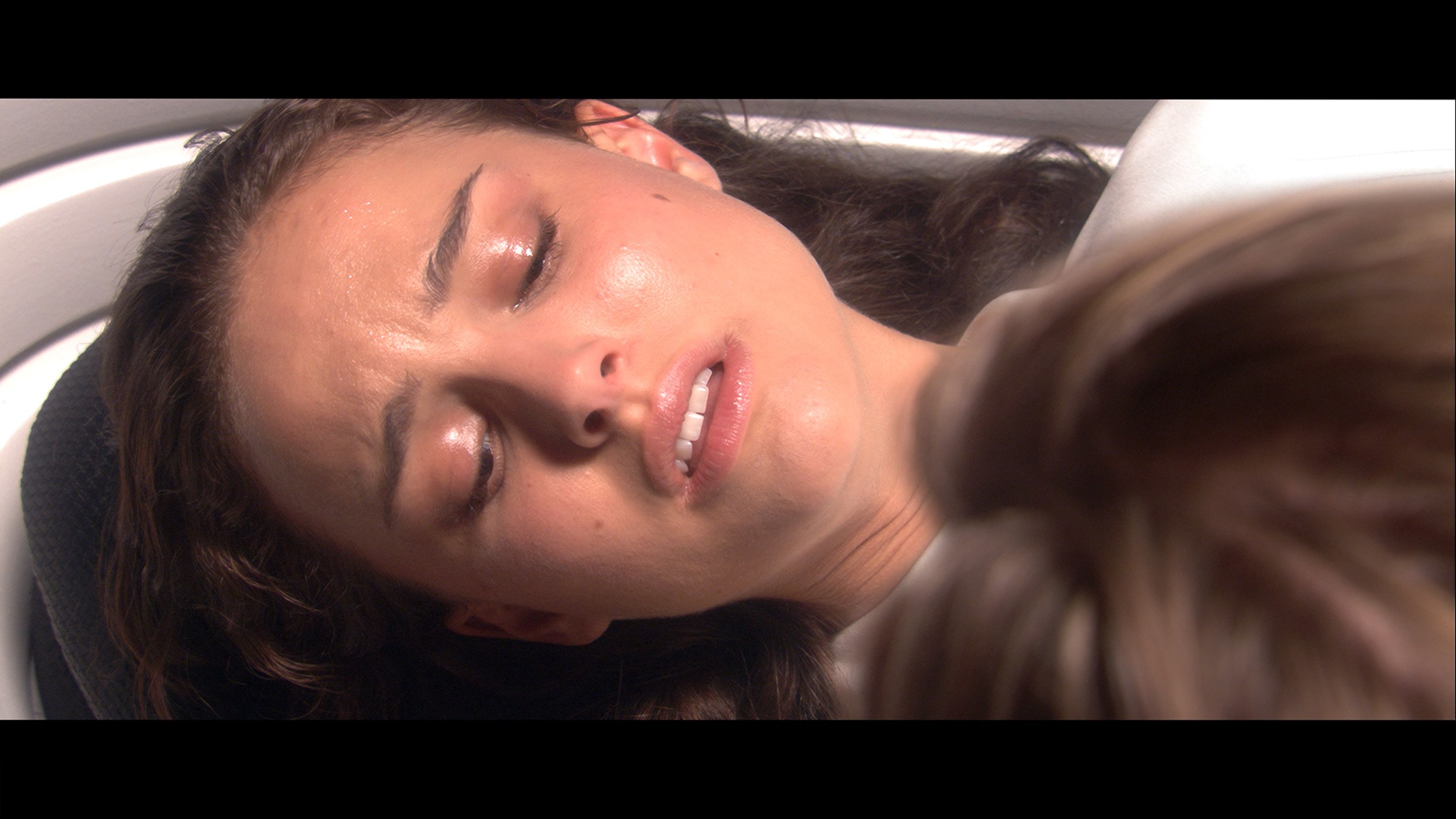
Factory Mode
After calibration
Unfortunately, when it comes to colour reproduction straight out of the box, the Filmmaker mode on the OLED910 performs really poorly. The television overemphasises the blue colour, and at times it looks almost like a shop display mode. This gives the impression that the manufacturer hasn’t quite tuned the device properly. The effect is that the colours look unnatural, and the whole thing resembles a somewhat exaggerated display from a market exhibition. HDR content is presented much better, where, apart from a slight loss of detail in the blacks, there’s not much to complain about. The problem is that in everyday viewing, it’s the SDR materials that matter the most – and on the OLED910, they simply look poor and fall well short of what we would expect from a television of this class.
A new feature in TCL televisions for 2025 is the long-awaited Filmmaker mode, which until now could be found in most competing brands. This is great news, as this mode is considered the one that most accurately represents the original vision of the creators and is often recommended by enthusiasts of good picture quality. Unfortunately – as is often the case – the mere presence of it does not guarantee perfection. The Filmmaker mode in the TCL C7K is not without its flaws. One can point out the incorrect white balance, particularly the slight dominance of blue, which resulted in cool, somewhat greyish skin tones. But that was not the biggest issue. The main complaint was excessive brightness exposure, which was clearly visible on gamma and EOTF charts. The image was simply too bright, at times even overexposed, which affected not only the texture of the scenes but also the overall viewing experience. Some details were simply lost, and the entire image looked like someone had slightly overdone the brightness slider. As always, we decided to see what could be squeezed out of it after calibration. And that’s where it started to get really interesting…
Color reproduction after calibration
9.4/10
7.5/10




Fortunately, it quickly turned out that it was not the panel causing the problems, but rather the way Philips factory-calibrated the OLED910. After calibration, the television displayed its full potential, and only then could we see what the new panels produced by LG Display were truly capable of. We primarily adjusted the white balance and brightness characteristics, successfully taming the excessive blue and giving the image a natural appearance. The final effect can be described as excellent. Errors on the Color Checker palette rarely exceeded a value of 3, which in practice means an image close to perfection and colours presented in accordance with the creators' intent. In SDR content, the effect was outstanding, and in HDR, the improvement was even more noticeable – gradients became cleaner, and colours fuller and more accurate. After calibration, the OLED910 transformed from a disappointing television into equipment that can confidently be referred to as a reference in terms of colour quality.
After calibration, the TCL C7K presented itself in a really good light, especially when it comes to SDR content. We managed to precisely tune the white balance, colour gamut, and brightness characteristics so that the colour errors on the ColorChecker palette fell below a value of 2. For the uninitiated – this is nearly a perfect result, indicating that the image closely resembles what the creators intended. Unfortunately, it looked worse with 4K HDR content. While we slightly managed to calm the white balance and correct its previous errors, it still shows that the TV has some “MiniLED traits”, particularly in brightness management. When we checked how the C7K copes with the EOTF curve on real film scenes, rather than just synthetic test patterns, it turned out that the screen still tends to slightly brighten the entire image. This affects the overall impression – the black loses some depth, and the image becomes less contrasty than it should be. Despite these minor shortcomings in HDR content, the overall reception of materials – especially in SDR – is truly very good. After calibration, the C7K is capable of displaying an image that can successfully compete with much more expensive models. Good colour tuning, natural skin tones, and pleasant brightness ensure that movie sessions and everyday content viewing are more than satisfactory.
Smoothness of tonal transitions
7.5/10
8.6/10





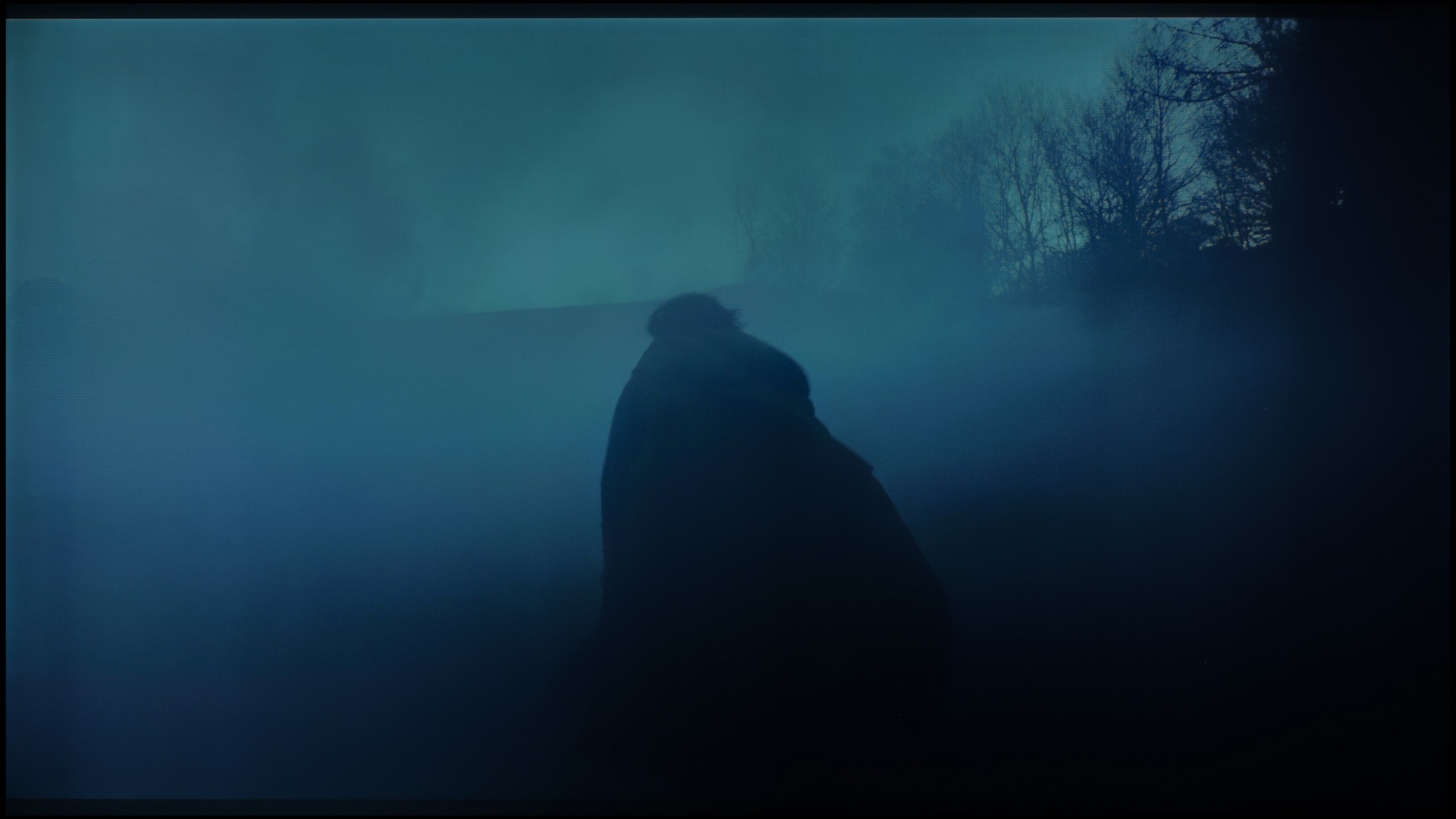






When it comes to colour combinations, the OLED910 performs quite well. In bright scenes, especially where strong bright colours dominate, it is difficult to spot any serious problems and the image looks very clean. It is less impressive in darker sections, closer to the grey palette – there you can notice characteristic banding, which may start to irritate more demanding viewers after a longer period of watching. Overall, however, it is a decent level and in most films or series, the effect should not be particularly bothersome.
TCL C7K performs very well with colour gradation – in most of the tested scenes, the tonal transitions were smooth, and the colours blended together without visible outlines or the artificial effect of “blobs”. In everyday use, it is difficult to find fault with anything – the picture looks natural, without irritating transitions or digital artefacts. Certain limitations only appear in very dark tones – particularly in a heavily muted grey palette, where the television may struggle to reproduce an ideal gradation. But this is absolutely understandable, as even many significantly more expensive models in this range simply falter. Fortunately, these situations are rare and do not significantly affect the overall impression.
Image scaling and smoothness of tonal transitions
7/10
5.5/10
Smooth transition function

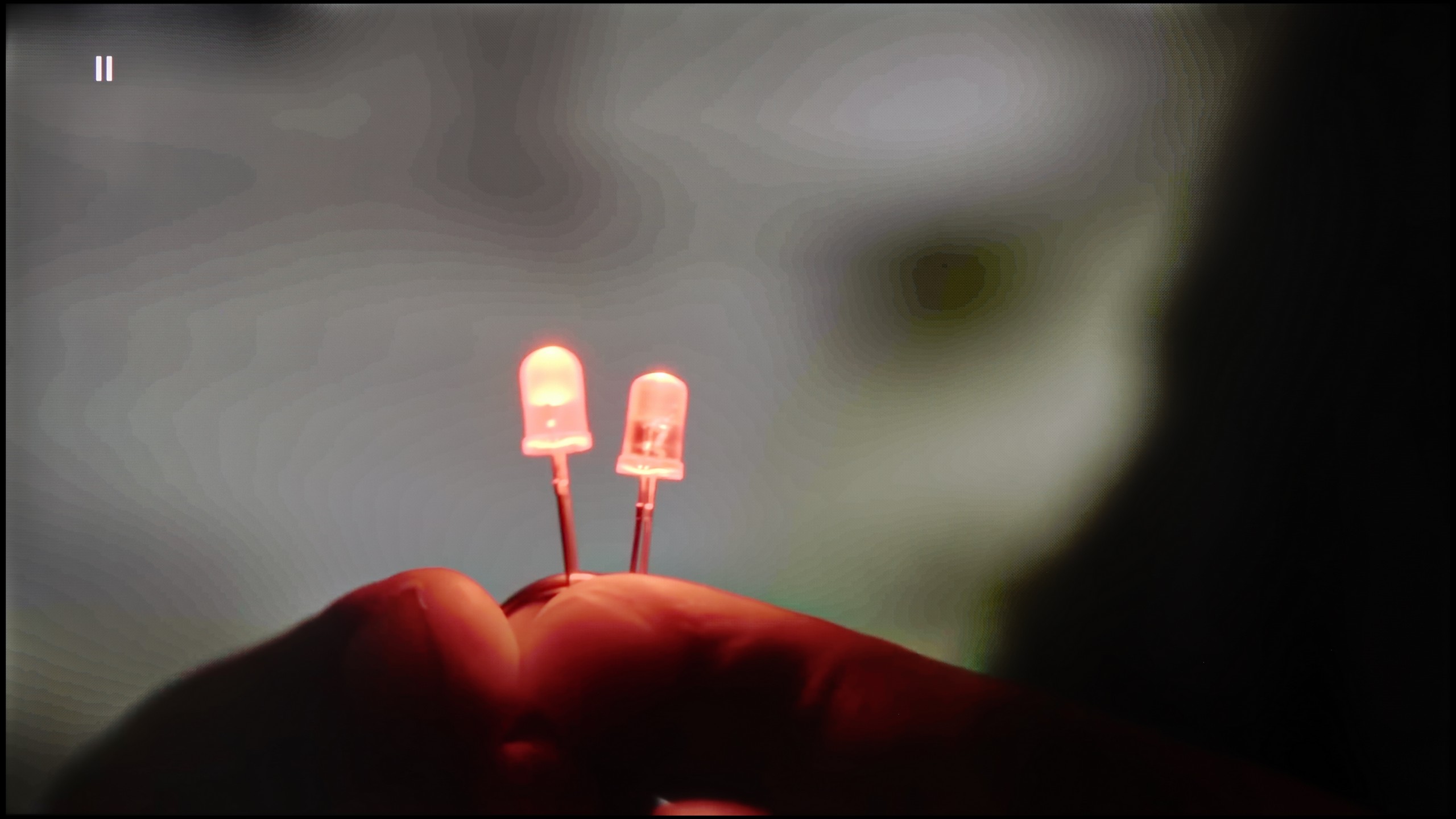
Image without overscan on the SD signal


The previously visible colour banding can largely be mitigated thanks to a feature called "distortion reduction." Like in the OLED820, it is best set to a medium level, as it then produces fairly decent results – smoothing out unwanted tonal transitions while not taking away too much detail from the image. Although at times the effect may be slightly too aggressive, this function can be considered useful for everyday viewing.
As for image scaling, the OLED910 performs really well. The test material featuring a model had a soft look characteristic of Philips – at times almost too soft – but this can be easily corrected with the sharpness slider, allowing you to adjust the image to your own preferences. It's also worth noting that the television has no issues with overscan, which still occurs in some competitor models. It's a small detail, but it's pleasing because it means that all content, even the oldest, is displayed as it should be.
The TCL C7K features a function that, according to the manufacturer, is designed to smooth out unwanted colour transitions – a sort of rescue for less successful tonal shifts. It's called "Gradual Smoothing" and... well, it sounds ambitious, but in practice, it works very poorly. Regardless of whether we set it to low or high, the difference is minimal. What's worse, the function can cut out elements from the image that should remain. Fortunately, the film grain remains untouched, so at least it doesn't smooth everything indiscriminately, but still – it's better to simply turn this option off.
When it comes to scaling lower resolution content, it’s much better. SD and HD materials look quite decent, although at times we had the impression that the image was losing sharpness and becoming too soft – as if something was detracting from its clarity. Fortunately, with very low sources (e.g. 576p), there was no overscan effect, meaning the image was not artificially cropped – everything fit on the screen as it should.
Blur and motion smoothness
8.5/10
8.1/10

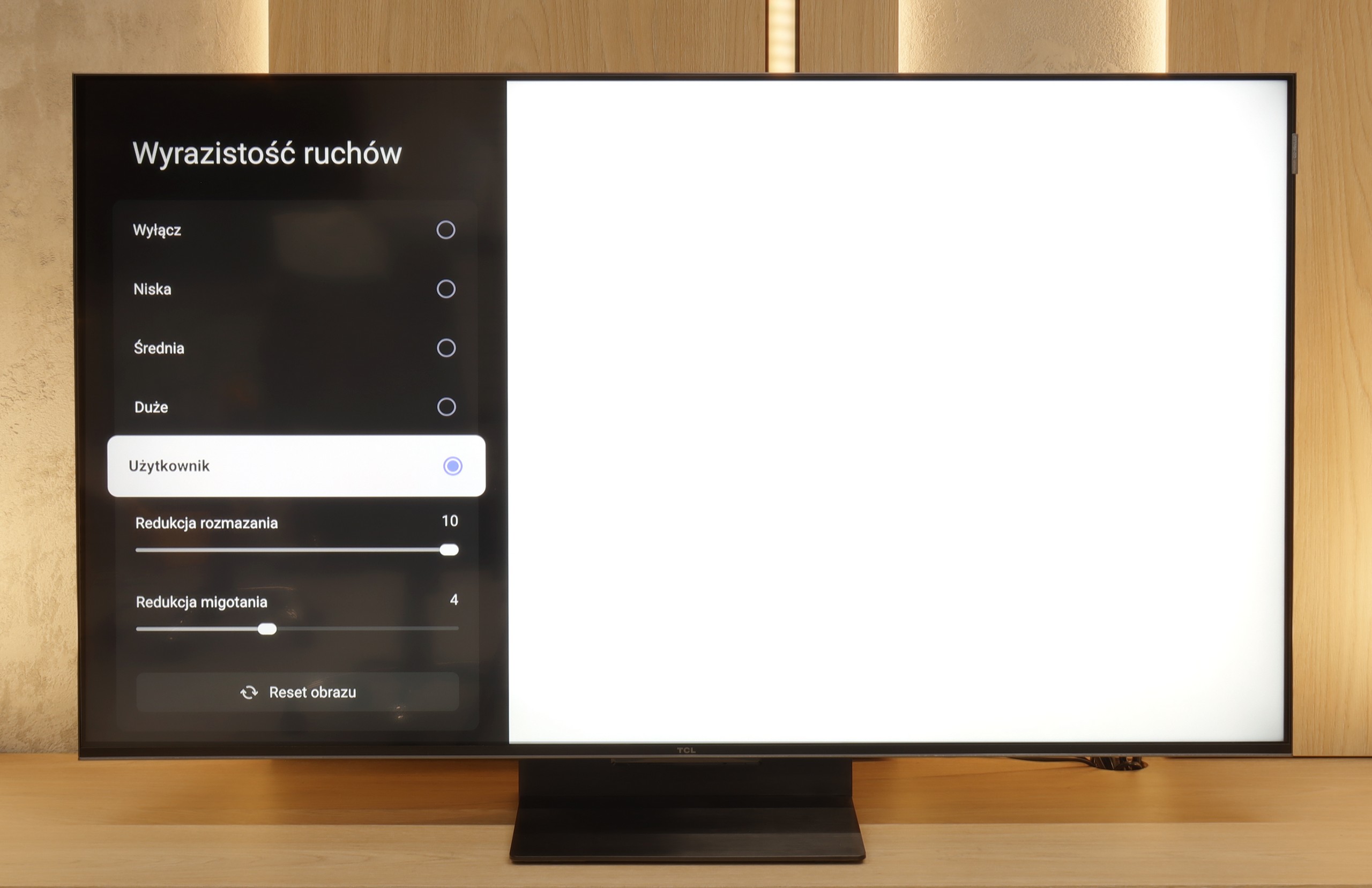
Blur (native resolution, maximum refresh rate):





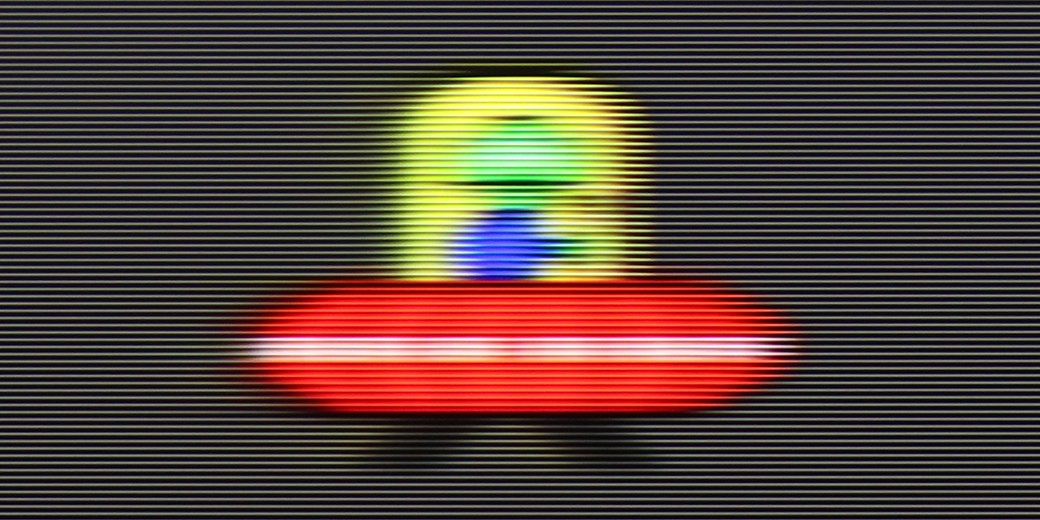
Blur (BFI function enabled):



Smużenie (4K@144Hz):



Smużenie (4K@144Hz):



OLED910 is a television with a refresh rate of 144 Hz. It’s a bit of a shame that Philips didn’t opt for 165 Hz, as we know that the panel used is capable of that. On the other hand, such a bonus would mainly benefit PC gamers, as in everyday use, the most important refresh rate is 120 Hz, which is fully sufficient. Combined with the advantages of the OLED panel – lightning-fast pixel response time and the absence of motion blur, the image is impeccably sharp and quick, even in dynamic action scenes. The traditional motion smoother from Philips, called “Motion Style,” also deserves praise. We can easily adjust it to our preferences: the “Fluidity” slider is responsible for films and allows you to choose between a more “filmy,” cinematic character and a smooth, theatrical image. Meanwhile, the “Motion Blur Reduction” slider is intended for sports, where it’s worth setting it to the maximum value to ensure that the image is clear and distinct during very fast shots.
The TCL C7K handles motion smoothness really very well. The matrix used in it offers a refresh rate of 144 Hz, which in itself suggests that this television is something more than a regular "60 Hz" panel. What's more – if we connect the C7K to a computer and set the resolution to Full HD. But we will write more about this in the section for gamers and cooperation with PCs. Returning to everyday use – both sports and films look very good here. Thanks to the fast panel and well-functioning motion smoother, the C7K is great for watching matches, as well as for film screenings. In the menu, we find two sliders – blur reduction and flicker reduction – which allow you to adjust the smoothness effect to your own preferences. At lower settings, we get a more cinematic effect, with a slight choppy motion. At higher settings – the image becomes more theatrical, overly smooth. Everyone can set it to their liking.
Console compatibility and gaming features
9.8/10
9.8/10
- ALLM
- VRR
- VRR range48 - 144Hz48 - 240Hz
- Dolby Vision Game Mode
- Correct implementation of HGIG
- 1080p@120Hz
- 1440p@120Hz
- 4K@120Hz
- Game bar

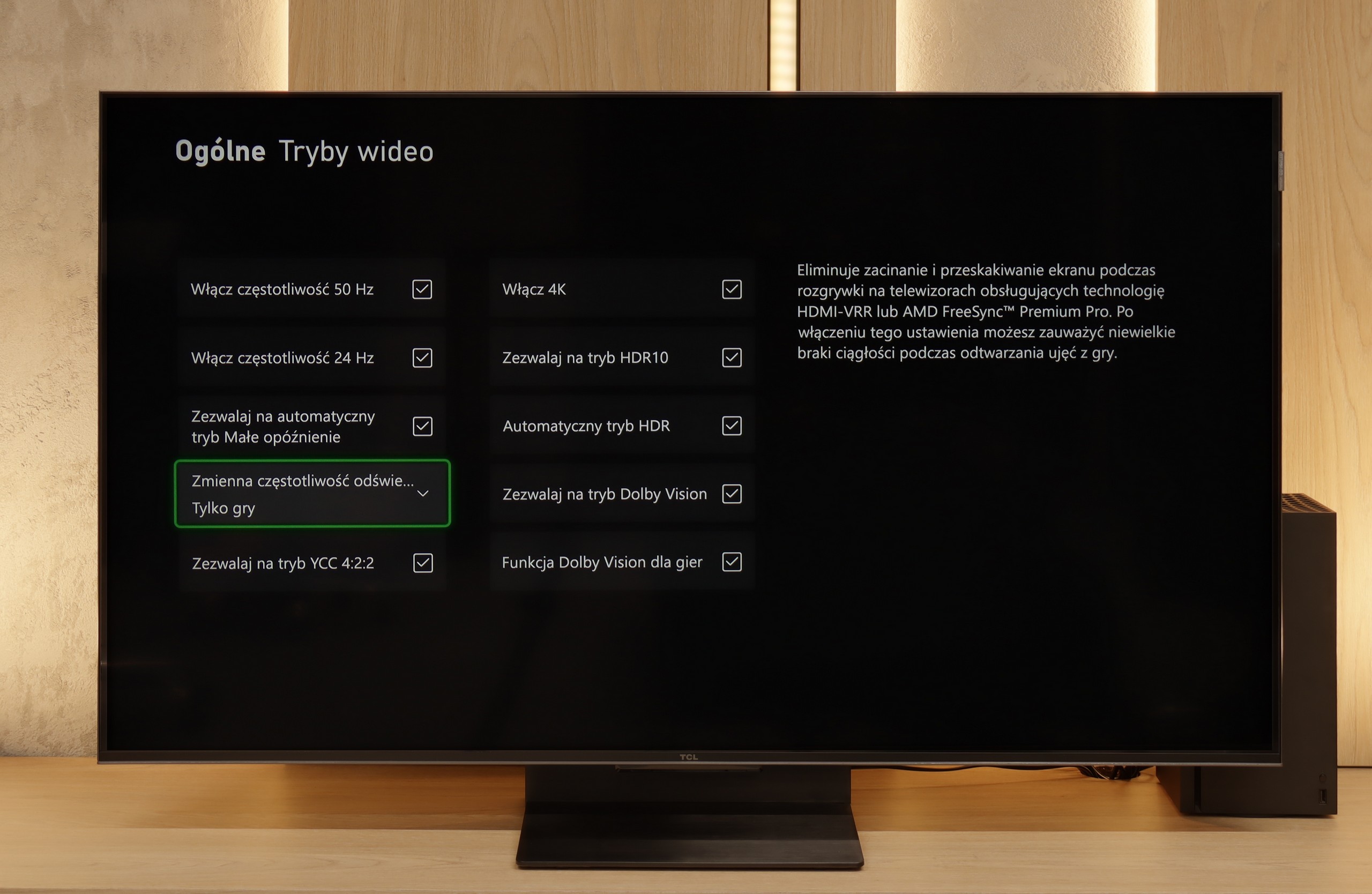

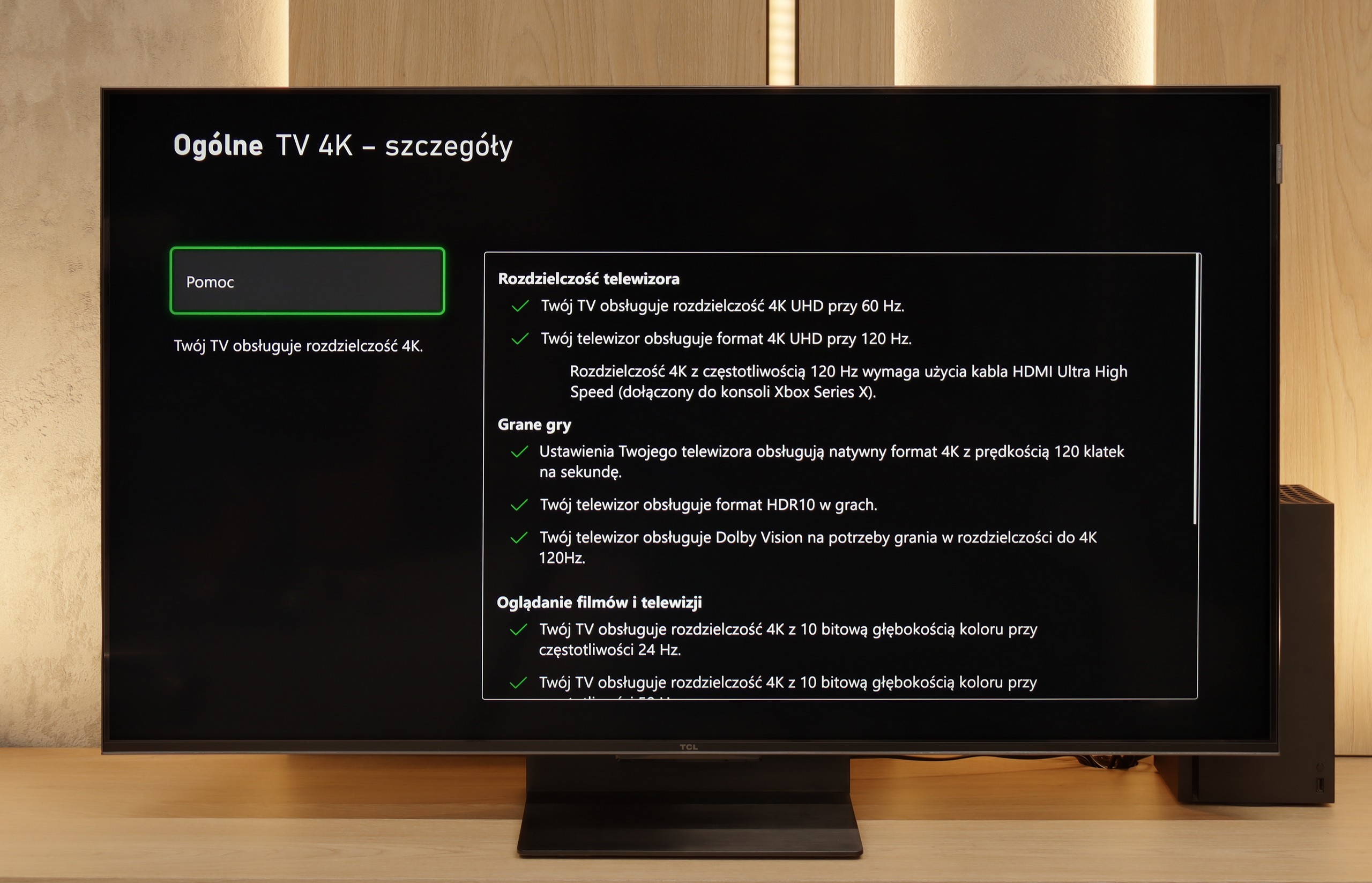

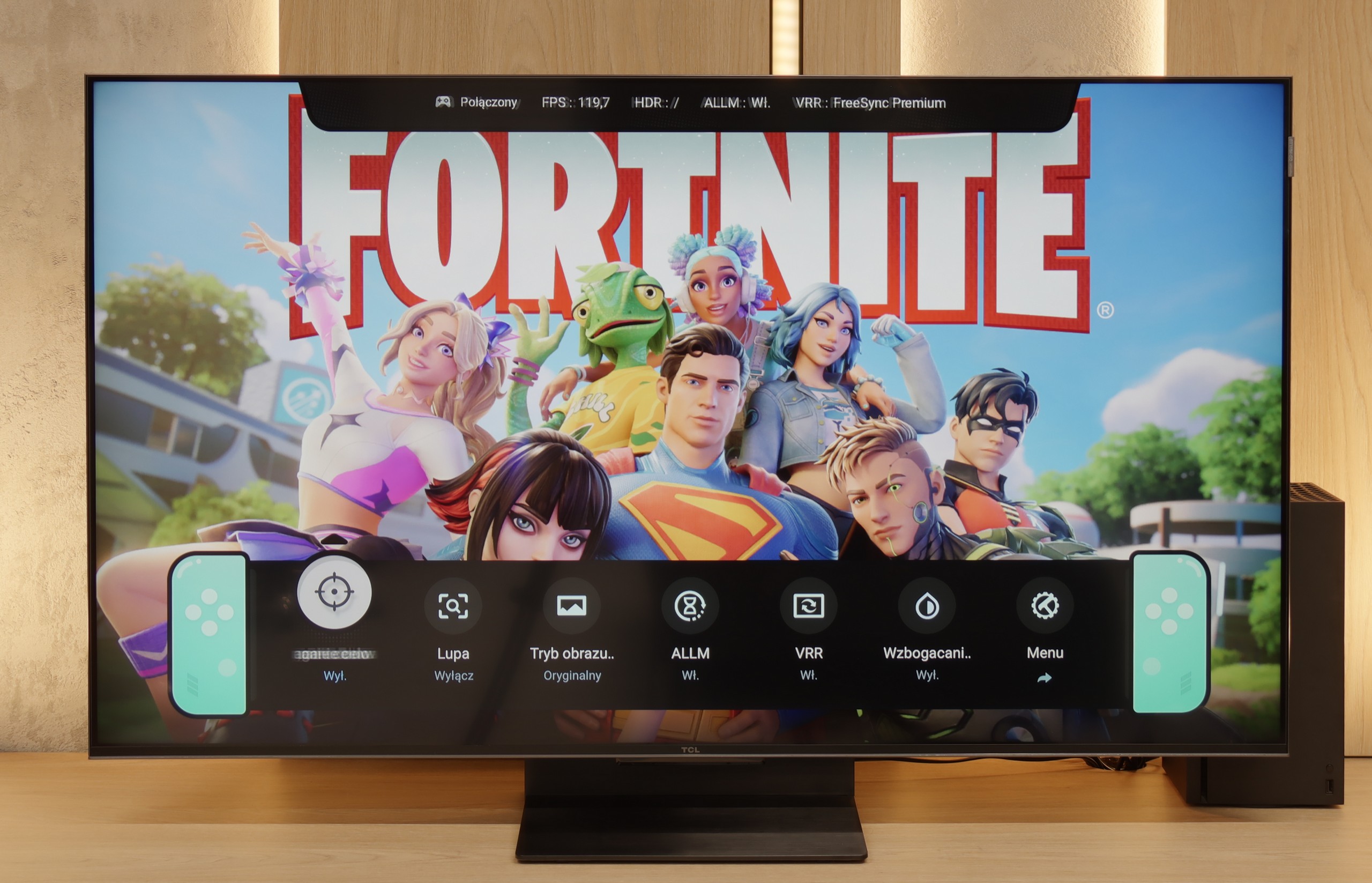

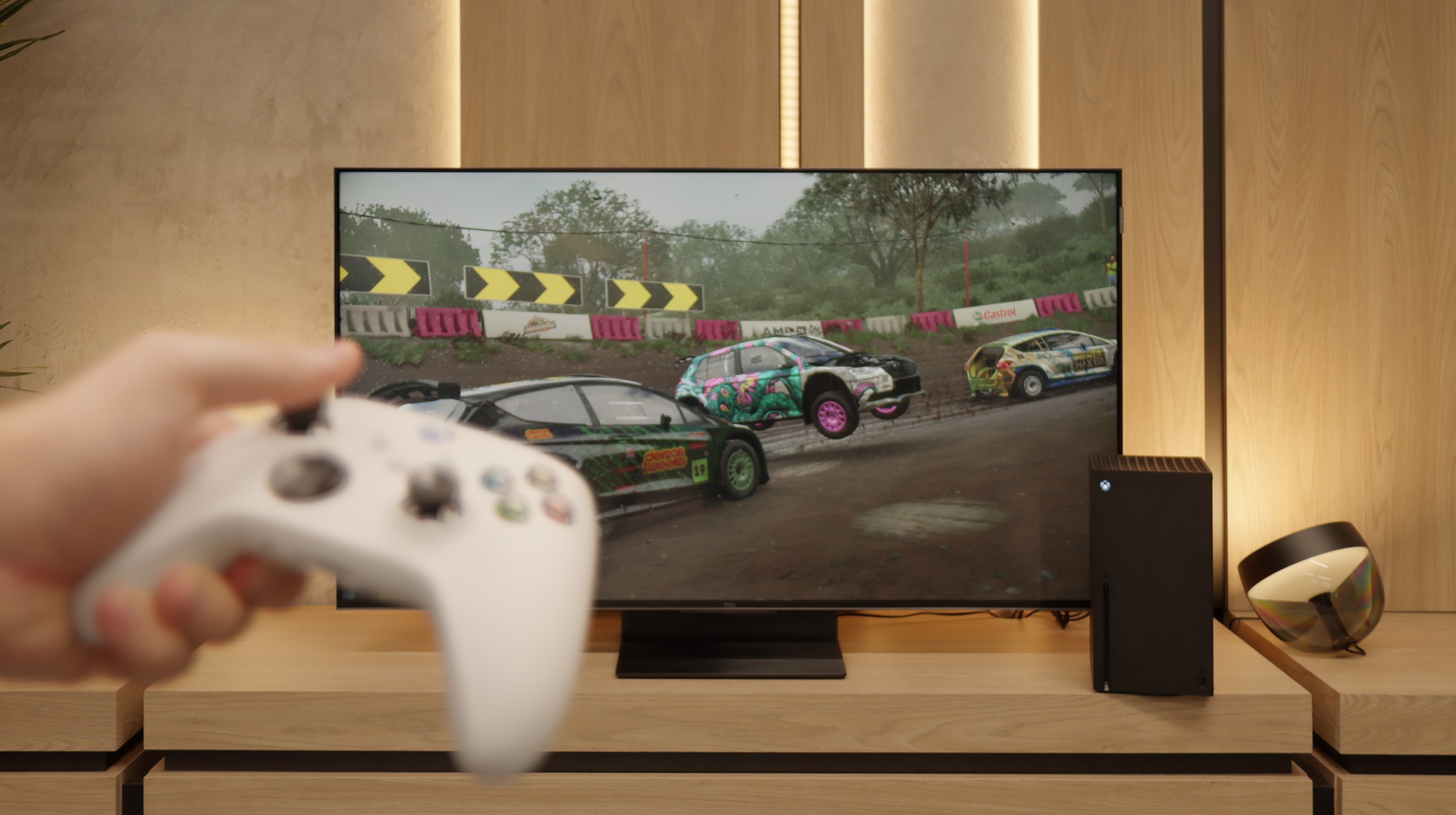
The OLED910 is fantastic for gaming. It supports 144 Hz, so if someone has a powerful PC, they can comfortably utilise that potential. On consoles, the most important thing is still 120 Hz, and everything works perfectly here. There's VRR, an automatic gaming mode, and even Dolby Vision in games and HGiG mode, so we really get a full package of gaming features. Philips has also added a Game Bar, which is a quick menu that displays basic information and allows you to enable a few useful things. It may not look as modern as the competition, but it works and fulfils its purpose. The only downside is the number of HDMI 2.1 ports. There are only two, which can be quite disappointing for a TV in this class. If someone connects two consoles and something additional through eARC - like a soundbar (which doesn't make much sense in this model but I'll discuss that in the paragraph about sound) - they'll have to do some adjustments. Other than that, the OLED910 has everything we expect from a gaming television.
The TCL C7K is a television that on paper appears to be the dream equipment for gamers – and most importantly, it also holds up in practice. To start with the good news: there are two full-bandwidth HDMI 2.1 ports, so we can easily connect both a console and a computer, making full use of their capabilities. The panel itself supports a refresh rate of 144 Hz, which provides a significant advantage in fast-paced games. Additionally, it comes with a complete set of gaming features: VRR (Variable Refresh Rate), ALLM (Auto Low Latency Mode), and support for Dolby Vision in games. There is also an HGiG mode that allows for an HDR effect in line with the creators' intentions. GameBar, which is an information bar for gamers. It works quickly, looks clear (like a Nintendo console👌), and shows the most important information: the current frame rate, VRR status, and even HDR parameters.
Input lag
10/10
9.6/10
SDR
HDR
Dolby Vision
In terms of input lag, the OLED910 has nothing to be ashamed of. In 120 Hz mode, the delay is around 5 ms, which is a reference result and guarantees instantaneous response. With 60 Hz materials, the values rise to around 13 ms, but this is still a very good result, entirely sufficient even for demanding gamers. Importantly, even in Dolby Vision, the input lag remains low, so you can enjoy both excellent picture quality and full responsiveness.
When it comes to delays, the C7K gives no reason to complain. In games at 120 Hz, the input lag is around 10 ms, meaning the television responds really quickly. Interestingly, even in Dolby Vision mode, the result is very similar, which is not always the standard. Well done, TCL. At 60 Hz, the lag obviously increases a bit, but that's completely normal and applies to practically every television with a 120 Hz refresh rate or higher. The most important thing is that everything still runs smoothly and there is no sense that something is not responding to our actions.
Compatibility with PC
6.5/10
8.4/10

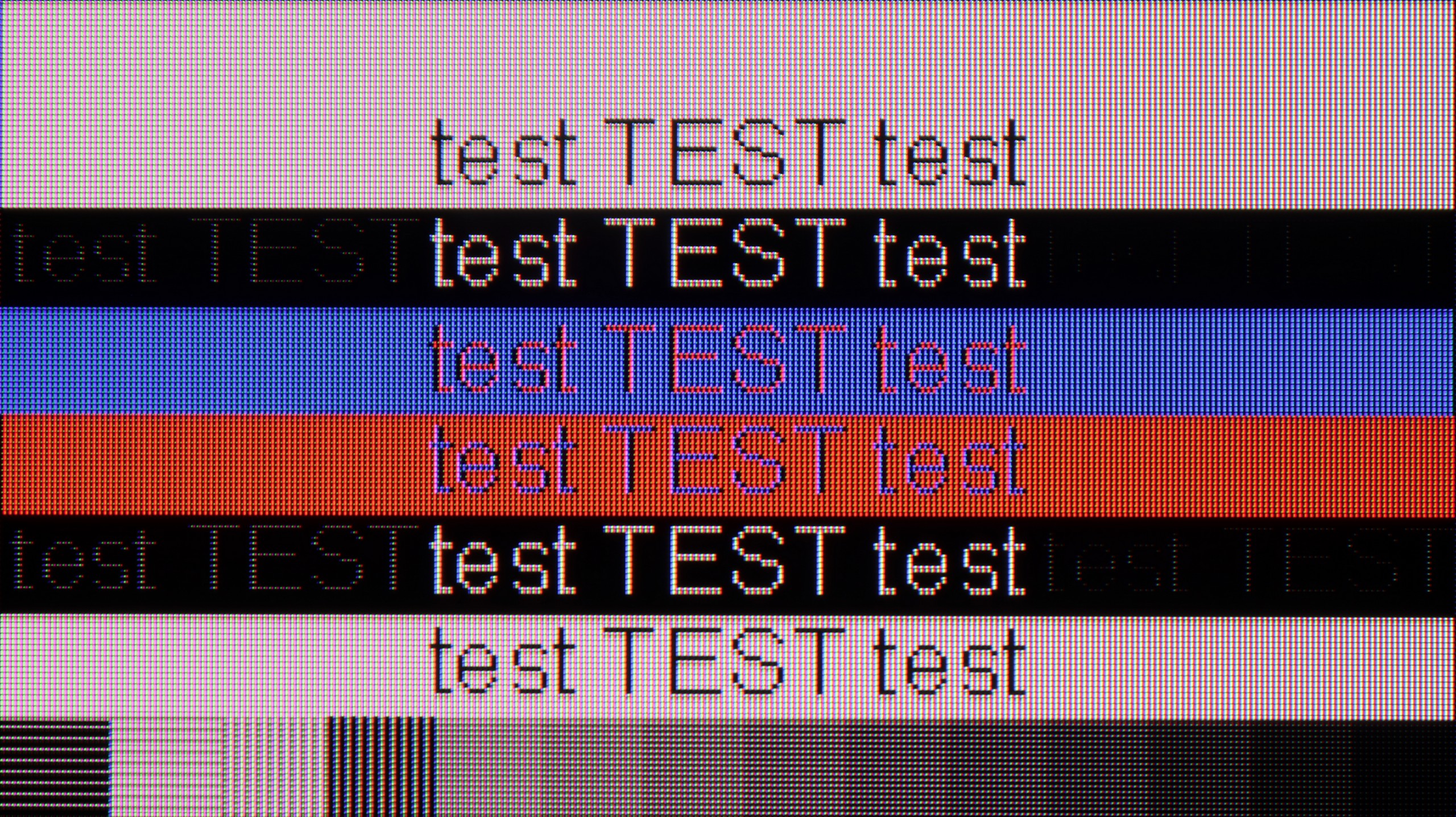
The OLED910 connected to a computer performs excellently in games. It has a 144 Hz refresh rate, very low input lag, and G-Sync support, so everything runs smoothly and without delays. For gaming, it's really hard to find any faults. It’s worse if someone wanted to work with text on it. Standard black-and-white fonts look fine, but the problem starts when colour elements appear in the document. The lack of full chroma 4:4:4 support causes such text to appear slightly blurred. For everyday office work, it’s a mediocre solution.
If we intend to connect the C7K to a computer – especially for gaming – there is really a lot to play for. Here we have 4K at 144 Hz, which sounds great in itself, but if we lower the resolution, the TV can display even 280 Hz. In e-sports, where every fraction of a second counts, that really makes a difference. Added to this is support for G-Sync and FreeSync, so no matter what graphics card we have – the image will be smooth, without any stutters or tearing.
However, if we plan to place the C7K on a desk and use it like a monitor, it’s a bit less "rosy". True, it supports chroma 4:4:4, so fonts should be sharp, but with very dark letters, there is a slight blurring and dimming of edges. This is not something that immediately jumps out at you during gaming or watching, but when working with text – it can be distracting. In everyday use – rather without concern, but if we plan to place 50 inches a metre from our face, it's worth keeping this in mind.
Viewing angles
7.6/10
3/10
The OLED910 performs very well in this regard. The new Tandem OLED RGB panel means that we no longer have the advantage that older MLA panels could pull off in a showdown with QD-OLEDs. Here, instead of a "remarkable" level, we simply have "very good." Brightness does drop a bit when viewed at an angle, but colour saturation is maintained, and even with a larger deviation, the picture looks appealing. It will be difficult to find a situation where the viewing angles in this model actually bother anyone.
There are no surprises here – the C7K has classic viewing angles for a VA panel. That is: sitting directly opposite – it’s great. The colours look good, the contrast is strong, everything is in place. But just shifting slightly to the side and it starts to get worse – the picture loses saturation, the black becomes greyish and the overall impression diminishes somewhat. So if we are planning to watch together with several people or have a sofa that takes up half the living room – it’s worth seating everyone more centrally. You can watch from the side, but don’t expect miracles – it’s simply a characteristic of the VA panel.
TV efficiency during daytime
7.3/10
6.4/10

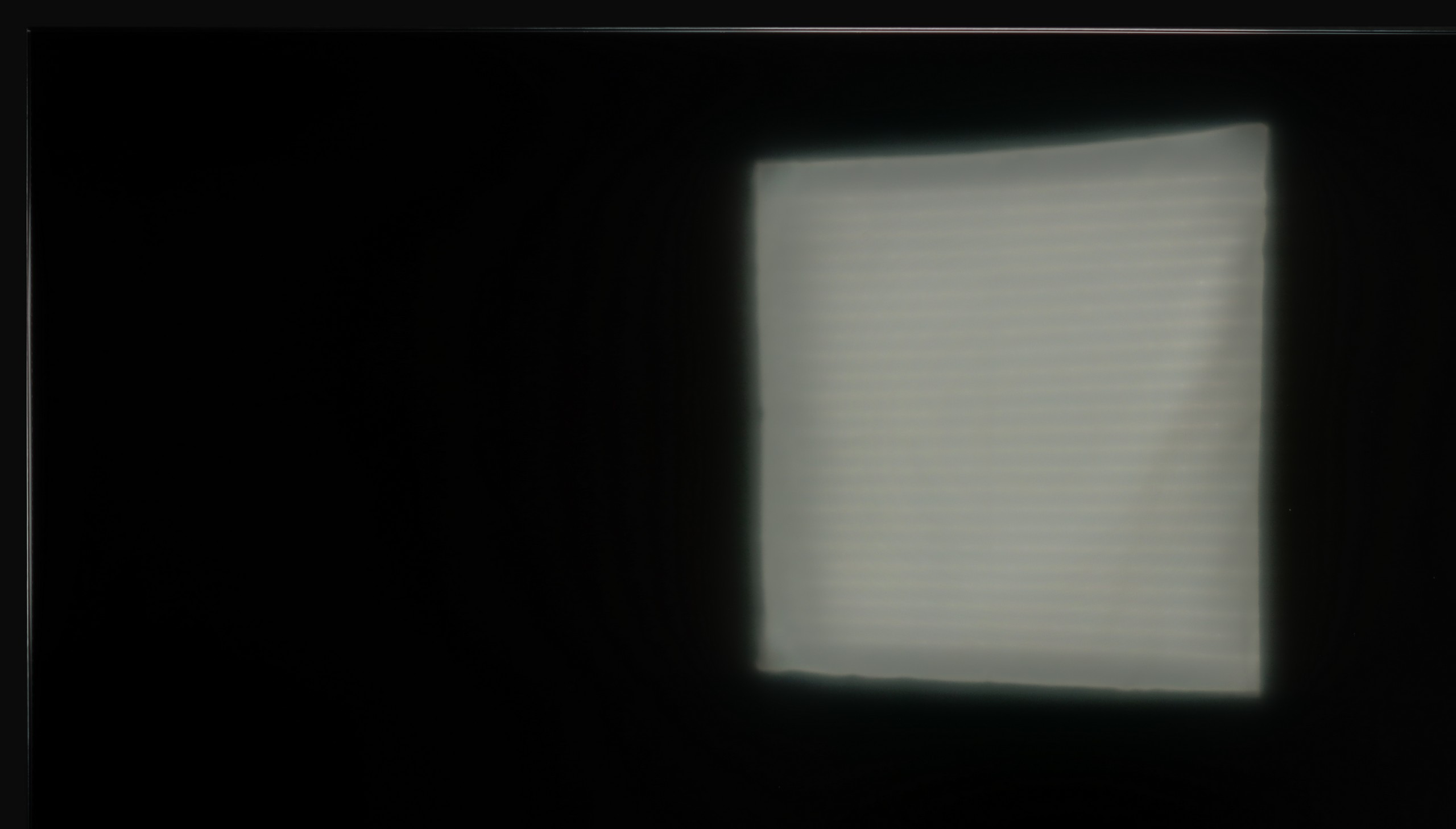


Matrix brightness
Average luminance SDR
TCL C7K / QM7K 55"-85": 529 cd/m2
Philips OLED910: 614 cd/m2
Fortunately, the TCL C7K performs quite well in a bright room. The applied matrix has a satin finish that effectively suppresses reflections, meaning we don't have to worry about reflections from lamps or windows even on sunny days. Importantly, the colours maintain their intensity and do not wash out, as can happen with weaker matte panels. As for the brightness itself, the average for content like YouTube or regular television reaches just below 500 nits. This is not a record-breaking result – for example, the MQLED85 (C765) performs better in this regard. However, it should work without major issues for everyday viewing during the day, as long as we do not plan to place it opposite a south-facing window without curtains.
Details about the matrix
Subpixel Structure:
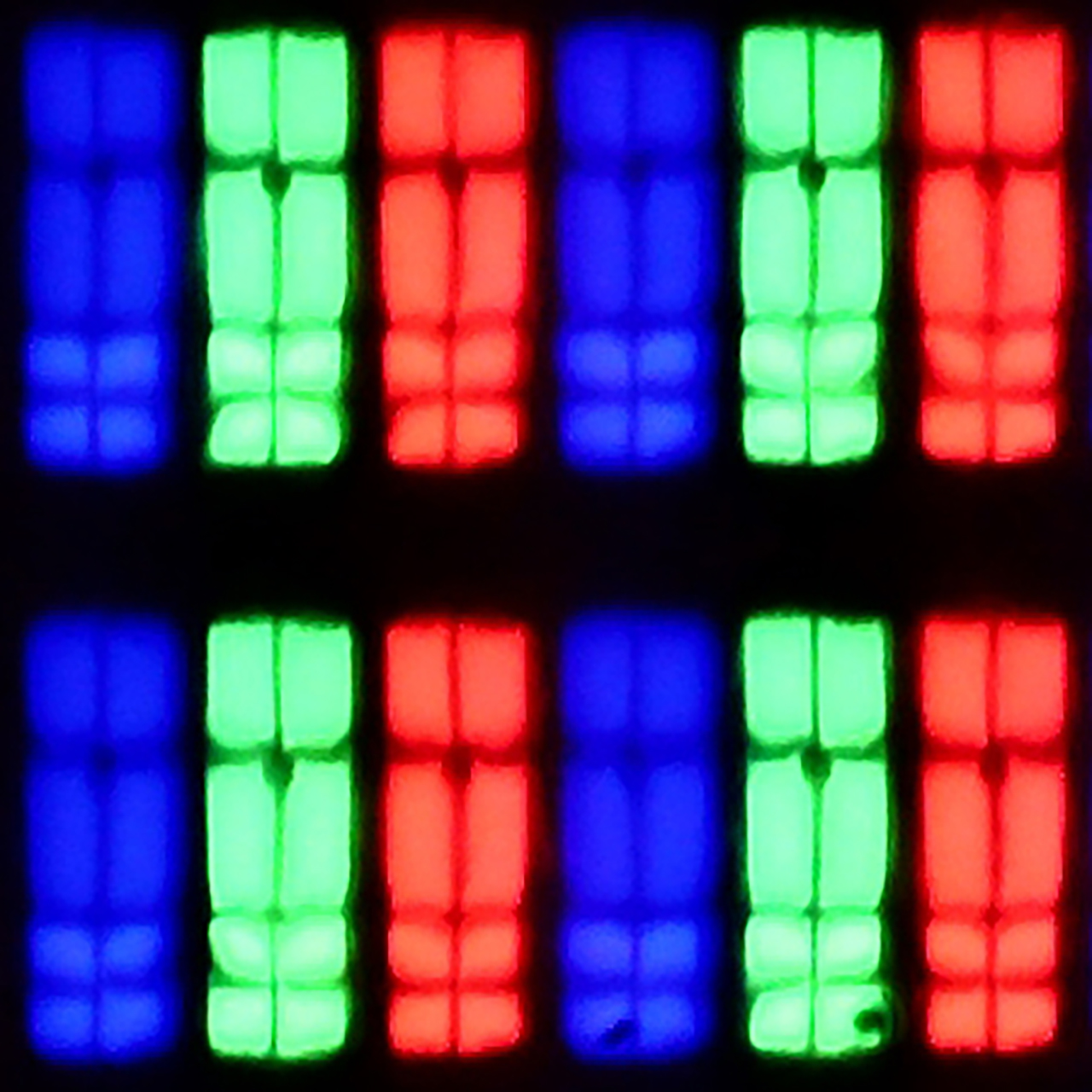
Panel uniformity and thermal imaging:

Philips OLED910
TCL C7K / QM7K 55"-85"
TV features
6.4/10
7.3/10
- HDMI inputs2 x HDMI 2.0, 2 x HDMI 2.1 48Gbps2 x HDMI 2.0, 2 x HDMI 2.1 48Gbps
- OutputsToslink (Optical audio), SPDIF (Coaxial audio), eARC (HDMI), ARC (HDMI), Mini-Jack (Headphones)Toslink (Optical audio), eARC (HDMI), ARC (HDMI)
- Network InterfacesWi-Fi 2.4GHz, Wi-Fi 5GHz, Ethernet (LAN) 100MbpsWi-Fi 2.4GHz, Wi-Fi 5GHz, Ethernet (LAN) 100Mbps
- TV receptionDVB-T, DVB-T2, DVB-S, DVB-S2, DVB-CDVB-T, DVB-T2, DVB-S, DVB-S2, DVB-C
Classic features:
- Recording to USB (terrestrial TV)
- Recording programming
- Picture in Picture (PiP)
- RF remote control (no need to aim at the screen)
- Backlit remote control
- Teletext
- Audio only mode
- Bluetooth headphones support
- Simultaneous Bluetooth headphones & TV audio
Smart features:
- AirPlay
- Screen mirroring (Windows Miracast)
- Voice search
- Voice search in native language
- Ability to connect a keyboard and mouse



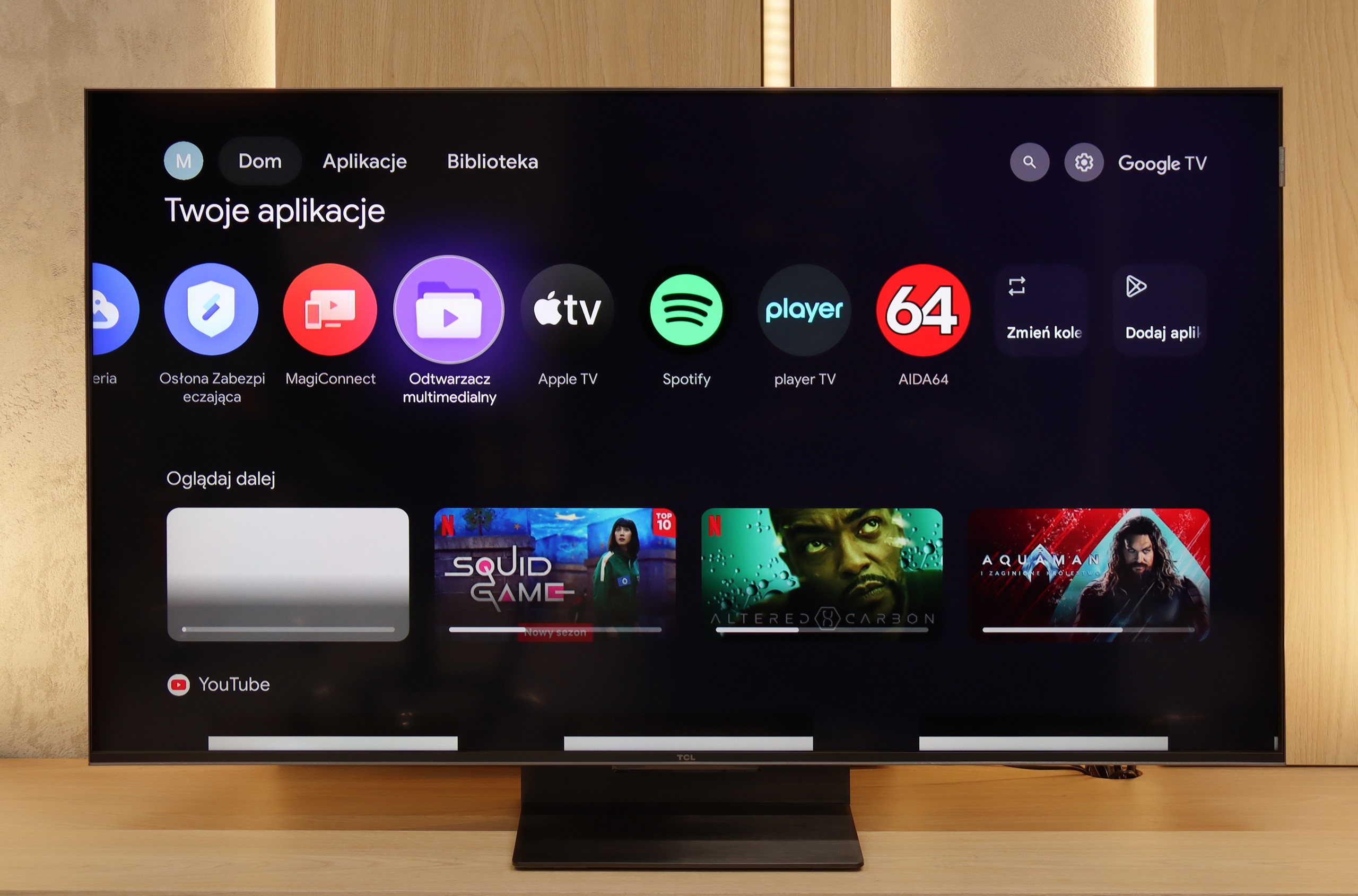
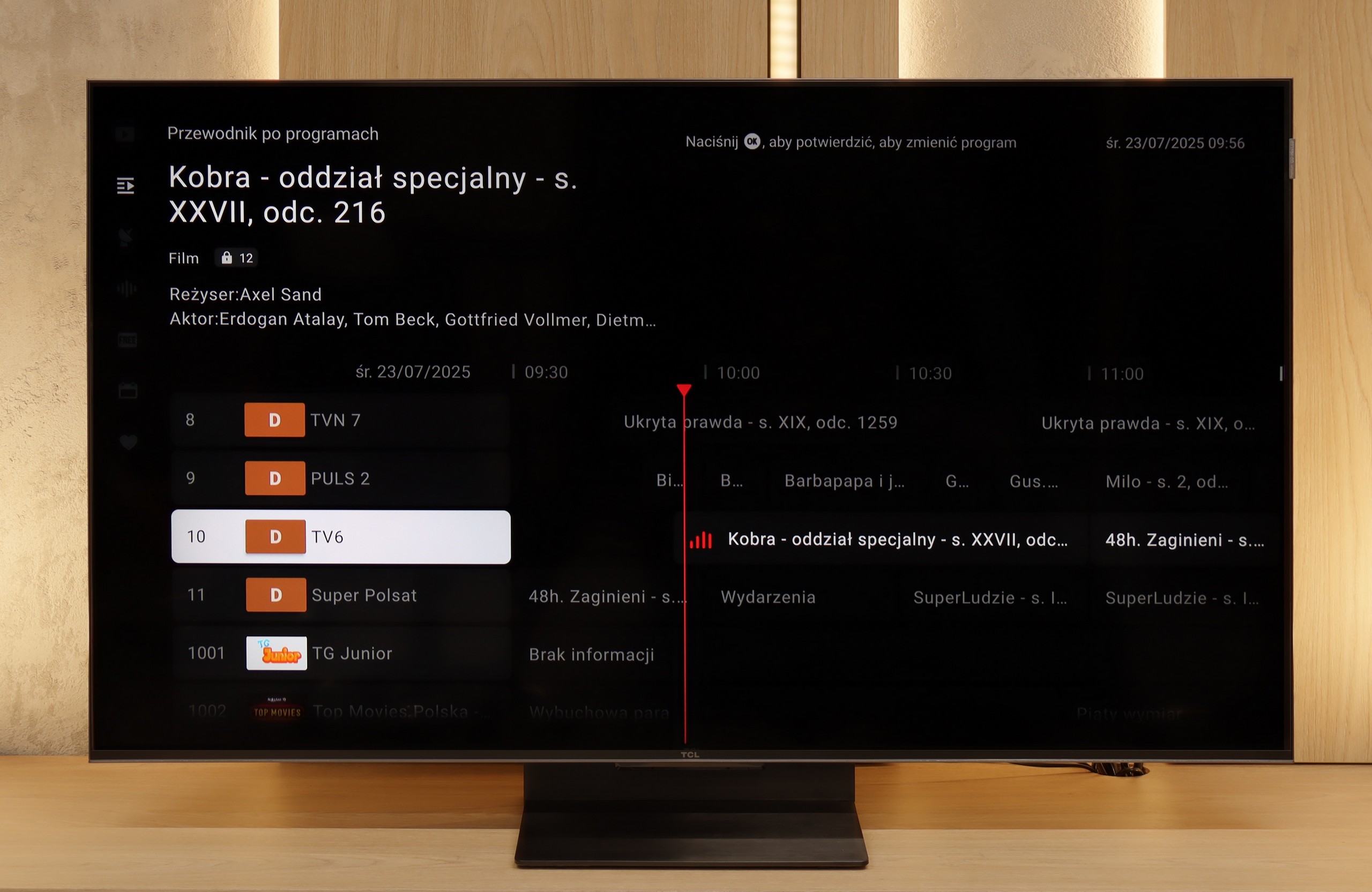
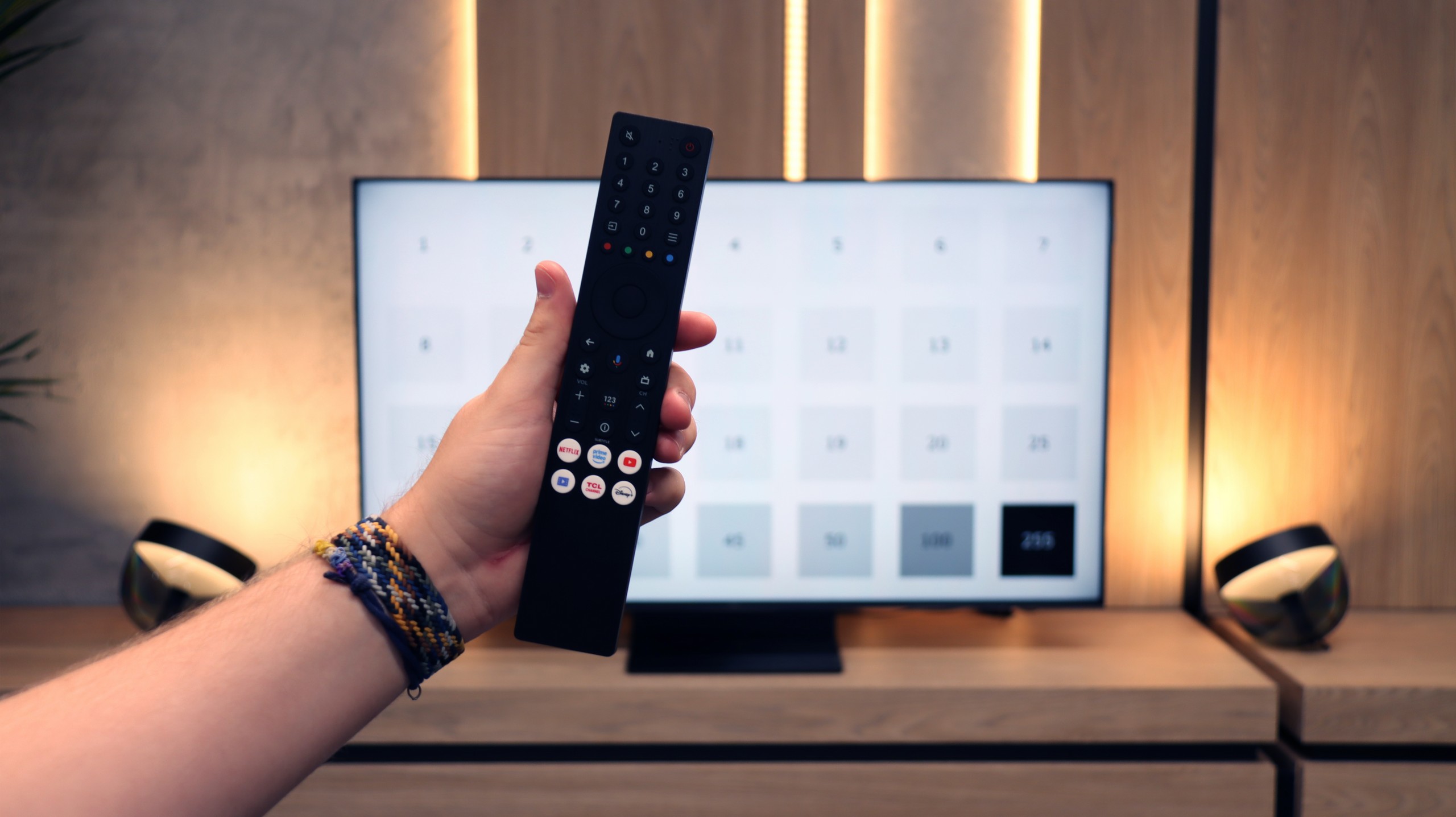
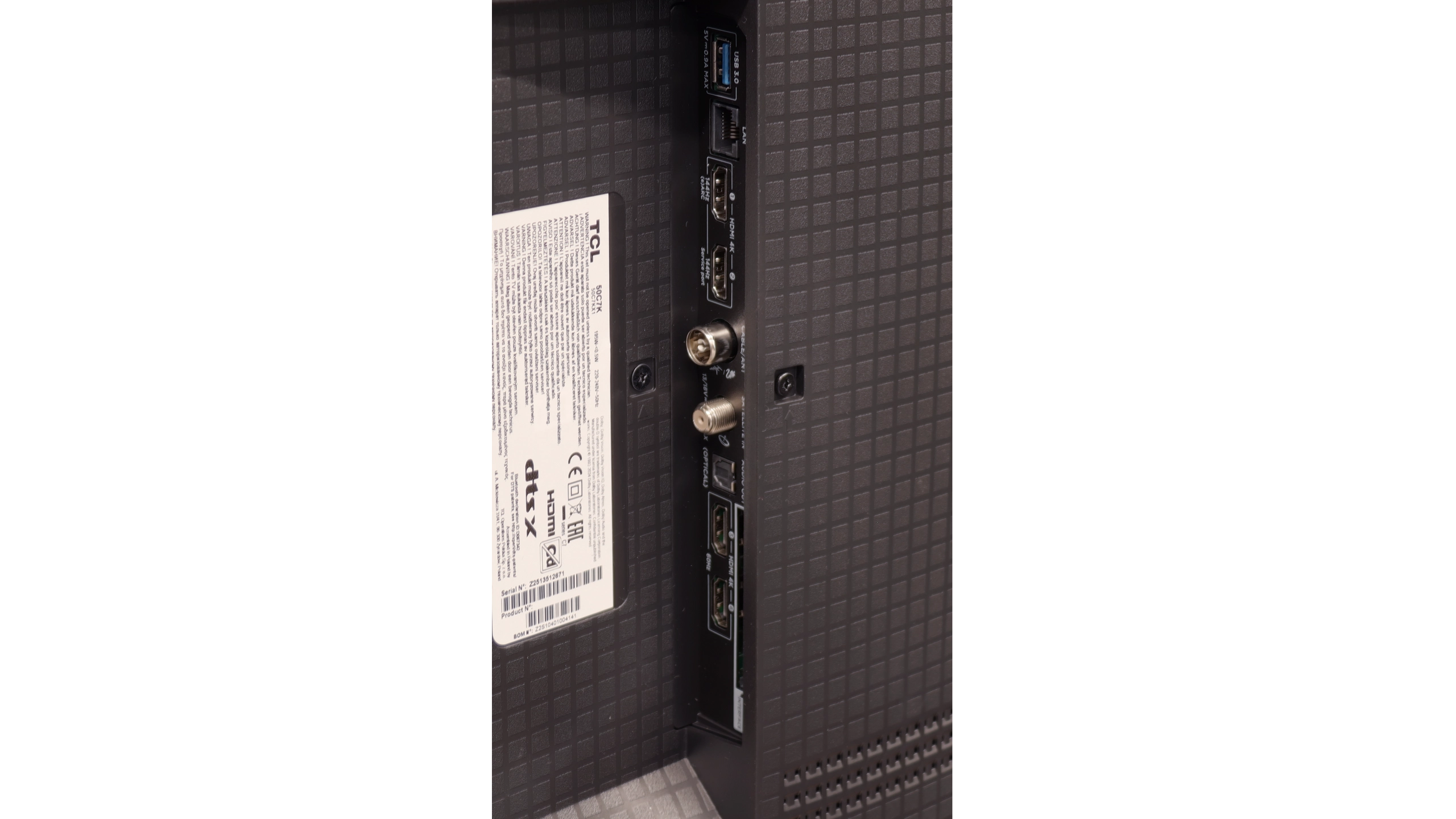
Google TV and Smart Features
The OLED910 operates on the Google TV system, which is definitely its strong point. We have access to a huge library of applications, from popular streaming platforms to niche programmes. In addition, there is voice search and Google Assistant, which works really well and understands even less obvious commands like "check the weather" or "give me a horror movie suggestion for tonight". There is also support for AirPlay, which facilitates cooperation with Apple devices. Unfortunately, classic screen mirroring simply did not work in our tests, so we cannot count this aspect as a positive.
Classic Features
As for more traditional solutions, the OLED910 does not offer anything special. It has a rarely seen mini-jack headphone socket, which may be useful for seniors or those using older speakers. The remote has backlit buttons, which is convenient, but at the same time operates via infrared, so you have to aim at the screen, which seems anachronistic in 2025. Although you can use headphones and speakers on the TV simultaneously, unfortunately, only wired – wireless connection is not possible, which is a slight inconvenience as who would want to use wired headphones today? There is also a lack of PiP function and the ability to record materials to USB.
4-Sided Ambilight System
And of course, Ambilight. The OLED910 comes with a full four-sided system. It makes the television seem larger, and the content viewed gains additional depth and a more impressive character. The effect is really strong, especially when the television is mounted on the wall and the light fills the entire surroundings. It is one of those additions that is hard to give up once you have tried it.
SmartTV: GoogleTV
The greatest strength of the TCL C7K in everyday use is undoubtedly the Google TV system. Thanks to it, we have access to an almost endless library of apps, including some more niche ones that are often unavailable on other platforms. The built-in Google Assistant understands Polish, so we can easily ask what is on TV, what the weather is like, and even issue a few voice commands to control the television. The presence of Chromecast and AirPlay is also a plus, as they work seamlessly and make life easier.
User Features
However, the classic features leave something to be desired. Here we will find the basics – teletext, EPG, or the option to connect headphones – but that's about it. There is a lack of USB recording functionality or picture-in-picture (PiP) mode, which can still be found with some competitors. It is also worth noting that Google TV in the TCL version can sometimes have oddly translated parts of the menu or minor errors in the interface. These are not things that interfere with everyday use, but those sensitive to details may notice them.
Playing files from USB
9.5/10
9.2/10
Supported photo formats:
Maximum photo resolution:

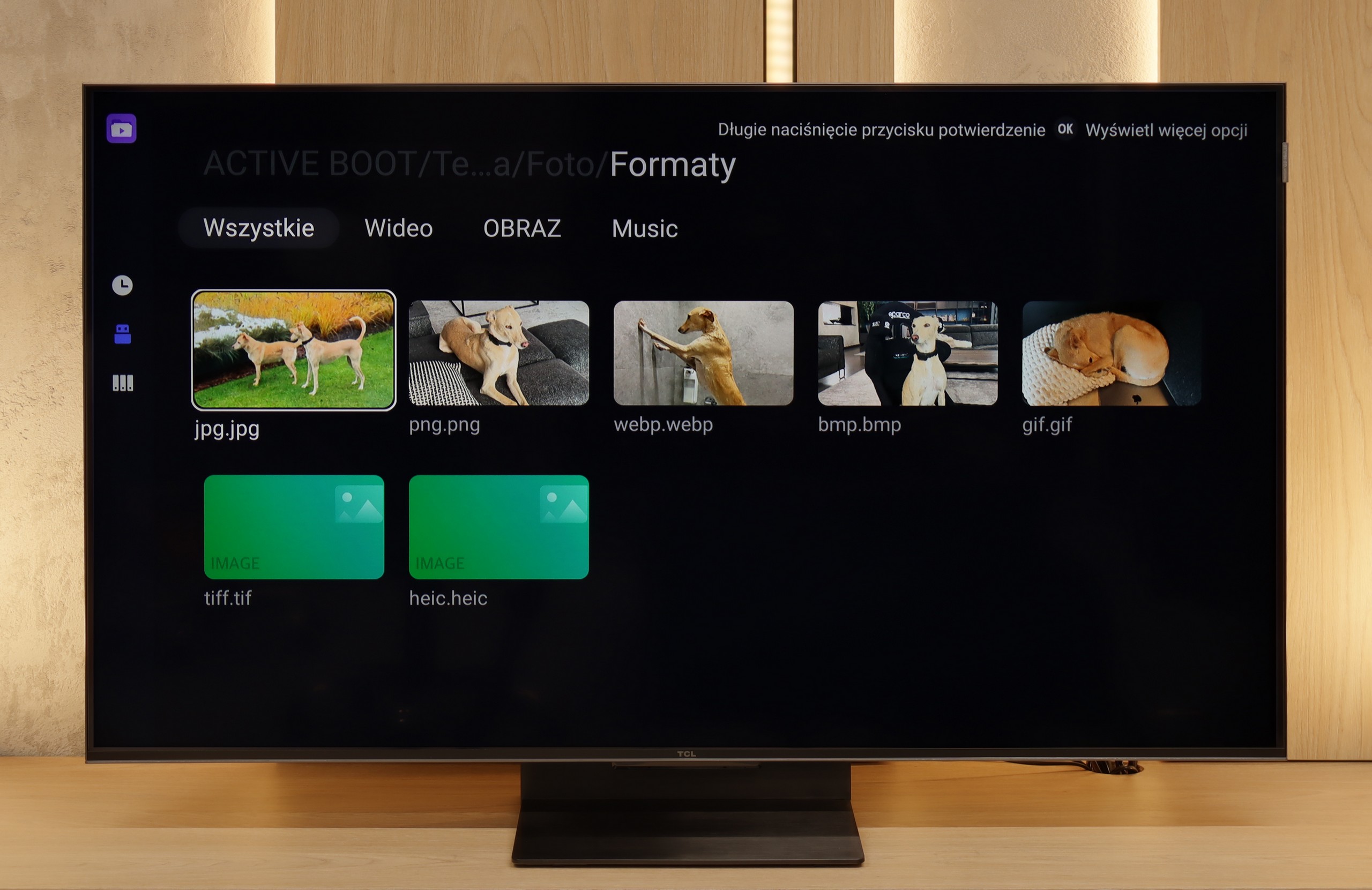
The OLED910 handles playback of files from a pendrive or a disk connected via USB with ease. It supports virtually all popular video, photo, and music formats, so you are unlikely to encounter something it cannot open. The player itself looks quite simple, almost clunky, but it operates efficiently. And if someone misses more advanced options, they can always download VLC or another program from the Google Play store.
The built-in media player on the TCL C7K performs really very well. It supports most of the most popular audio and video formats, so if we want to quickly throw something on from a USB drive and play it, there shouldn't be any problem. Of course, as is often the case, you can find some minor shortcomings – not every exotic codec will work (Apple's HEIC), not all subtitles will be perfectly synchronised (txt.). However, the biggest advantage of this television comes to the rescue, which is Google TV. With access to the Google Play store, we can easily install an alternative player, such as VLC, and then no files will be daunting.
Apps
9.6/10
9.6/10














































Sound
9.5/10
7.7/10
- Maximum volume88dB-
- Dolby Digital Plus 7.1
- Dolby True HD 7.1
- Dolby Atmos in Dolby Digital Plus (JOC)
- Dolby Atmos in Dolby True HD
- DTS:X in DTS-HD MA
- DTS-HD Master Audio
This is one of the best-performing televisions we have had the opportunity to test in the editorial office. The built-in soundbar does all the work here, and it can comfortably be said that it can replace basic external audio systems. The sound is deep, clear, and truly enjoyable, and the collaboration with Bowers & Wilkins proves to be not just a marketing gimmick, but a real enhancement of sound quality. If someone would like to take a step further, Philips offers the possibility of connecting an external subwoofer thanks to a dedicated pre-out connection. With such a setup, it reaches a level that is hard to find in televisions – and one can confidently talk about truly cinematic experiences.
In the larger versions of the C7K (from 55 inches upwards), the sound is even more impressive than in the smallest 50-inch variant. This is due to the greater number of built-in speakers and additional channels that allow for a fuller, more spacious sound. The bass becomes more pronounced, dialogues gain clarity, and the film effects can really fill the room.
It is worth mentioning the collaboration between TCL and the Bang & Olufsen brand, which appeared in the 2025 models. Even if we do not have a hundred percent certainty that original transducers from the Danish company are inside, the final effect surprises very positively. For a television without an additional soundbar, the larger C7K models deliver sound that can be enjoyed even during longer film screenings.
Acoustic Measurements
88dBC (Max)
75dBC
No acoustic data


